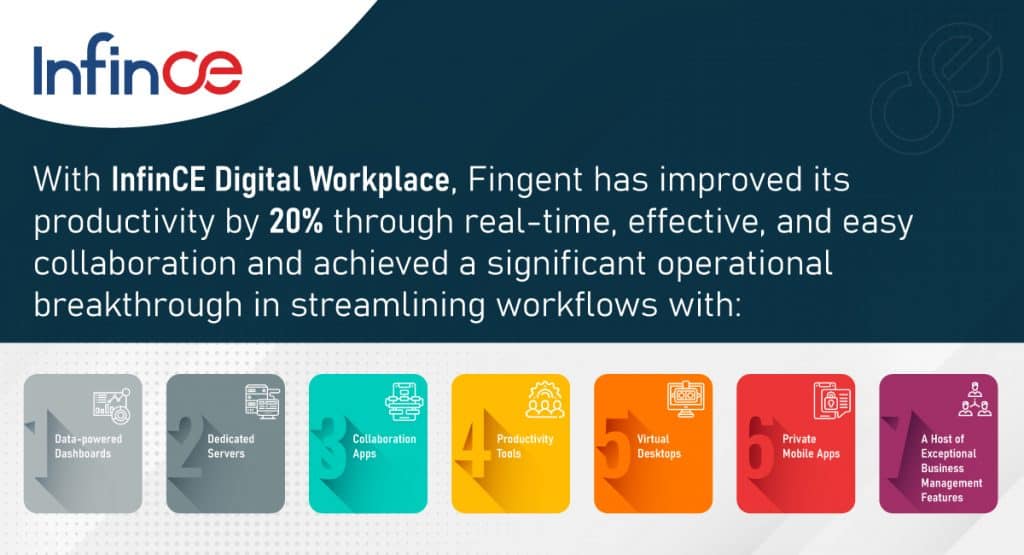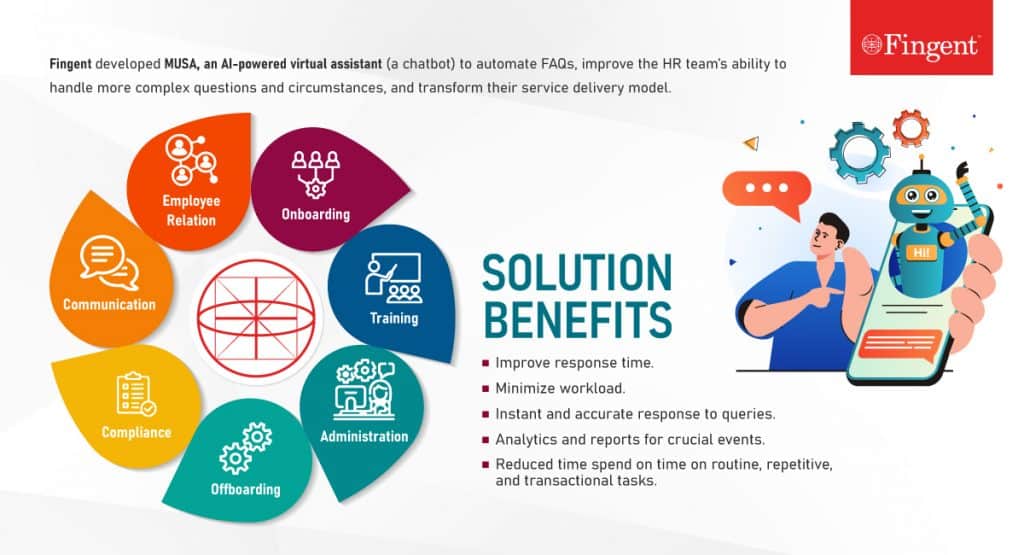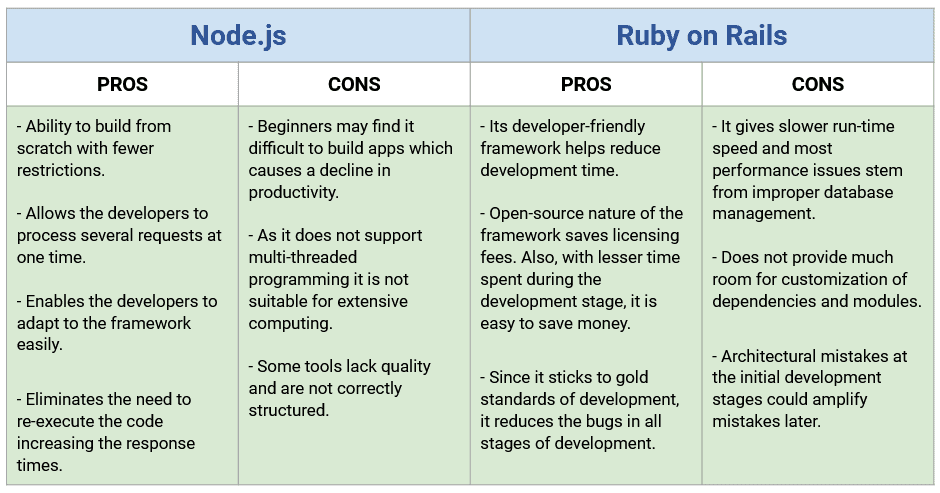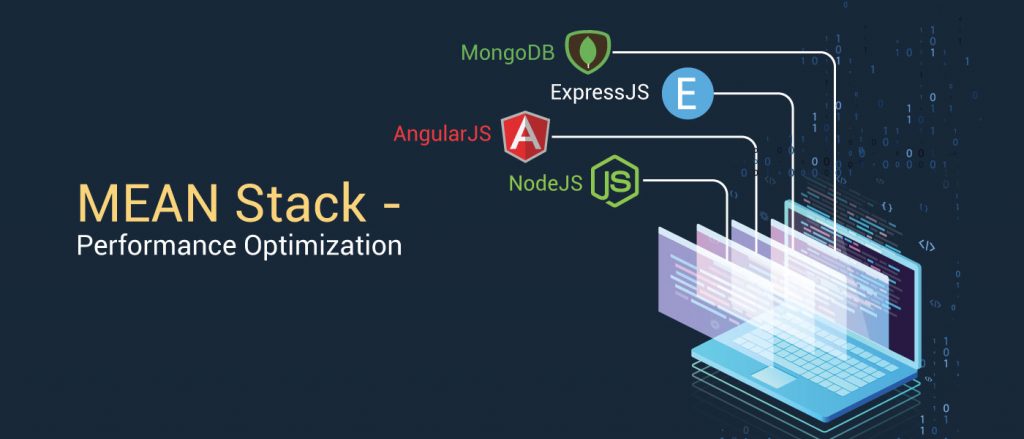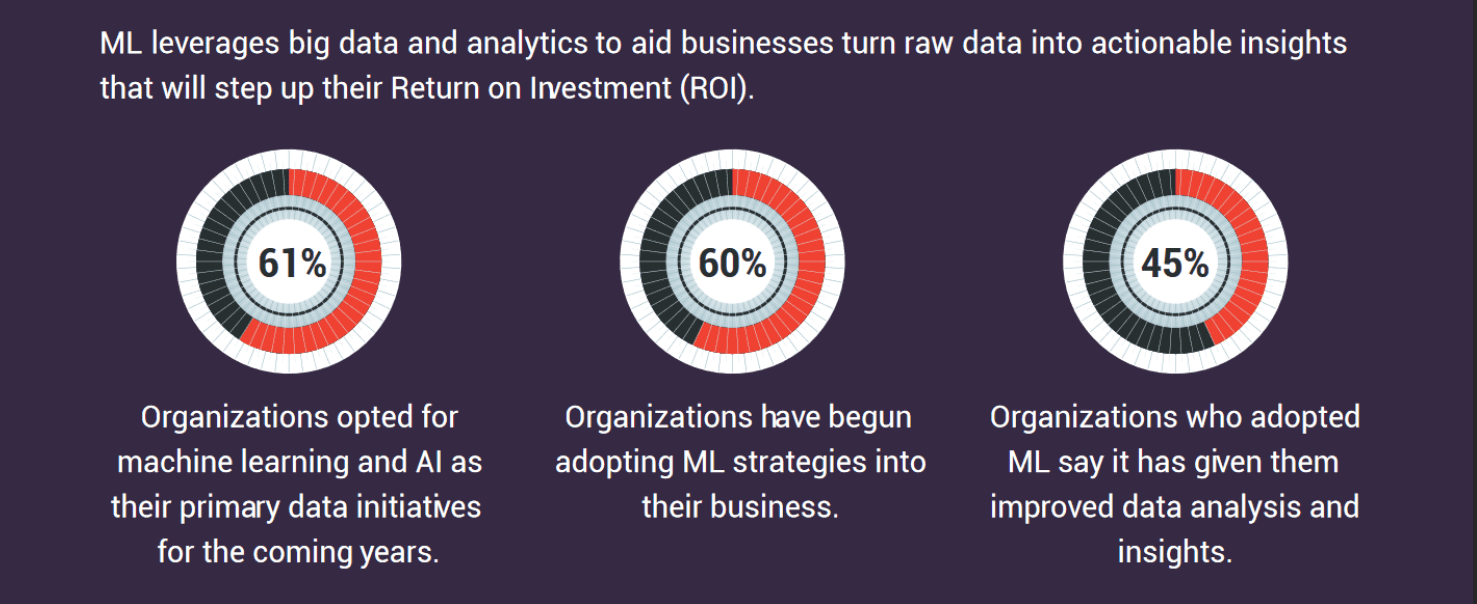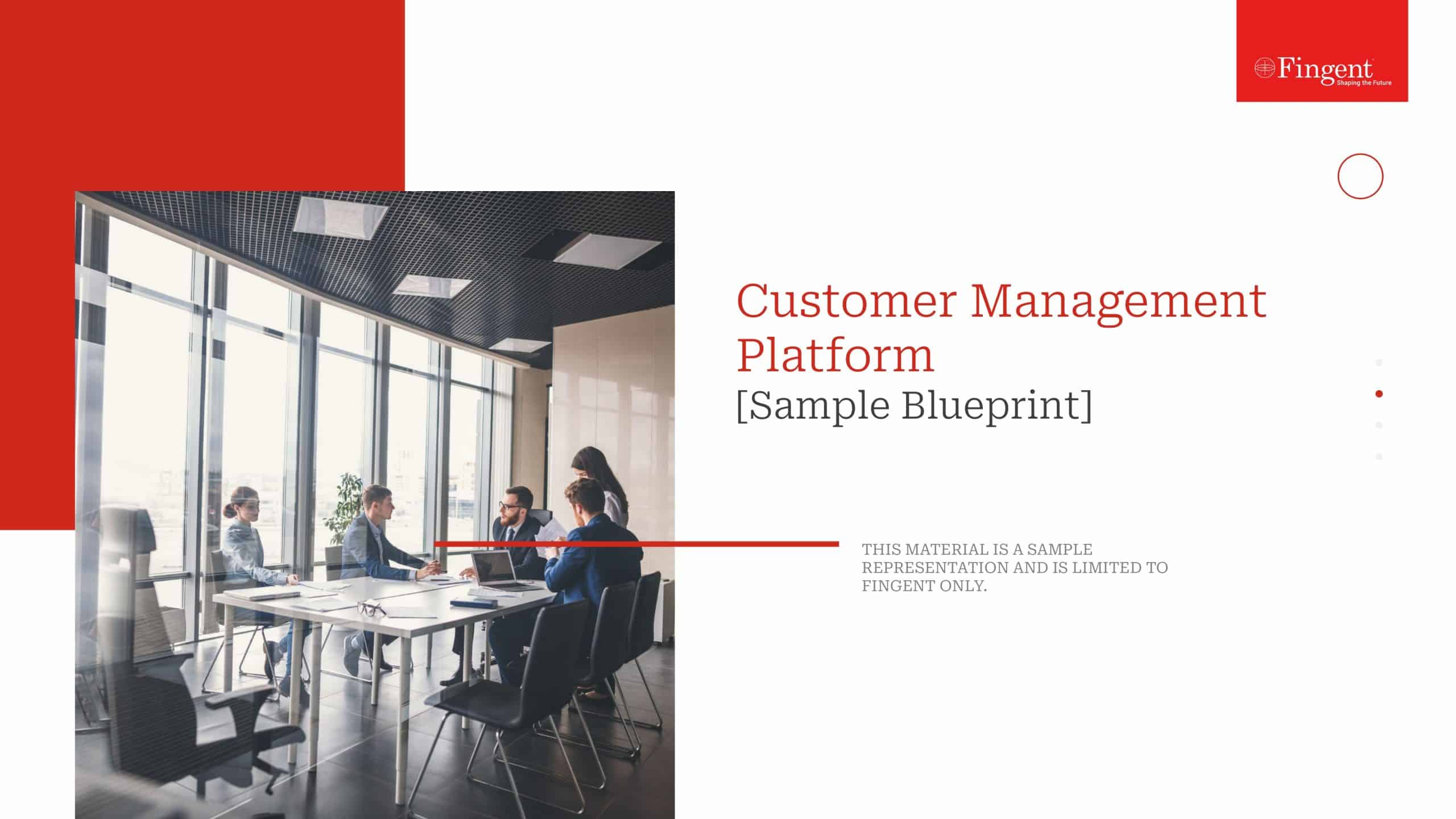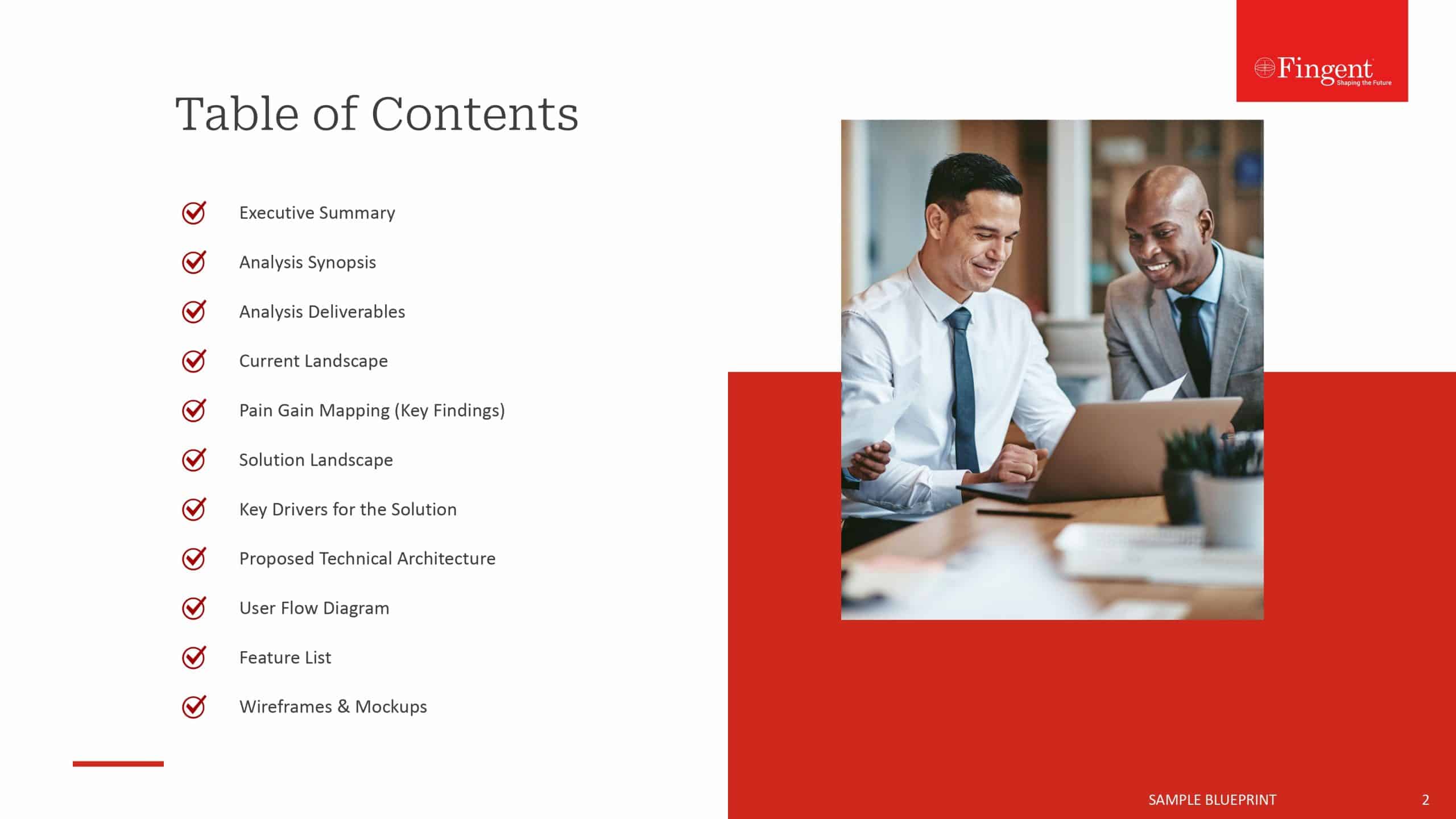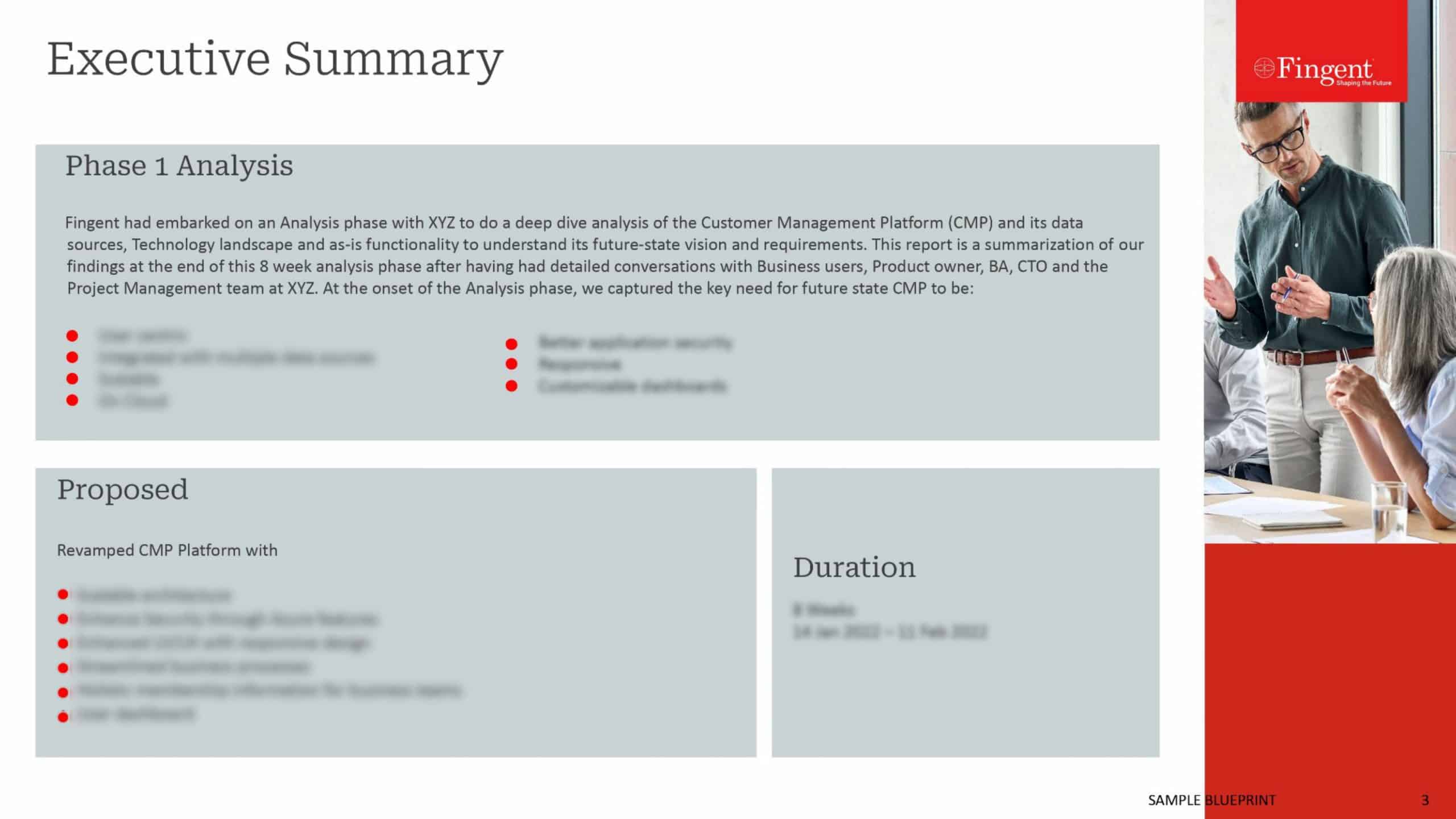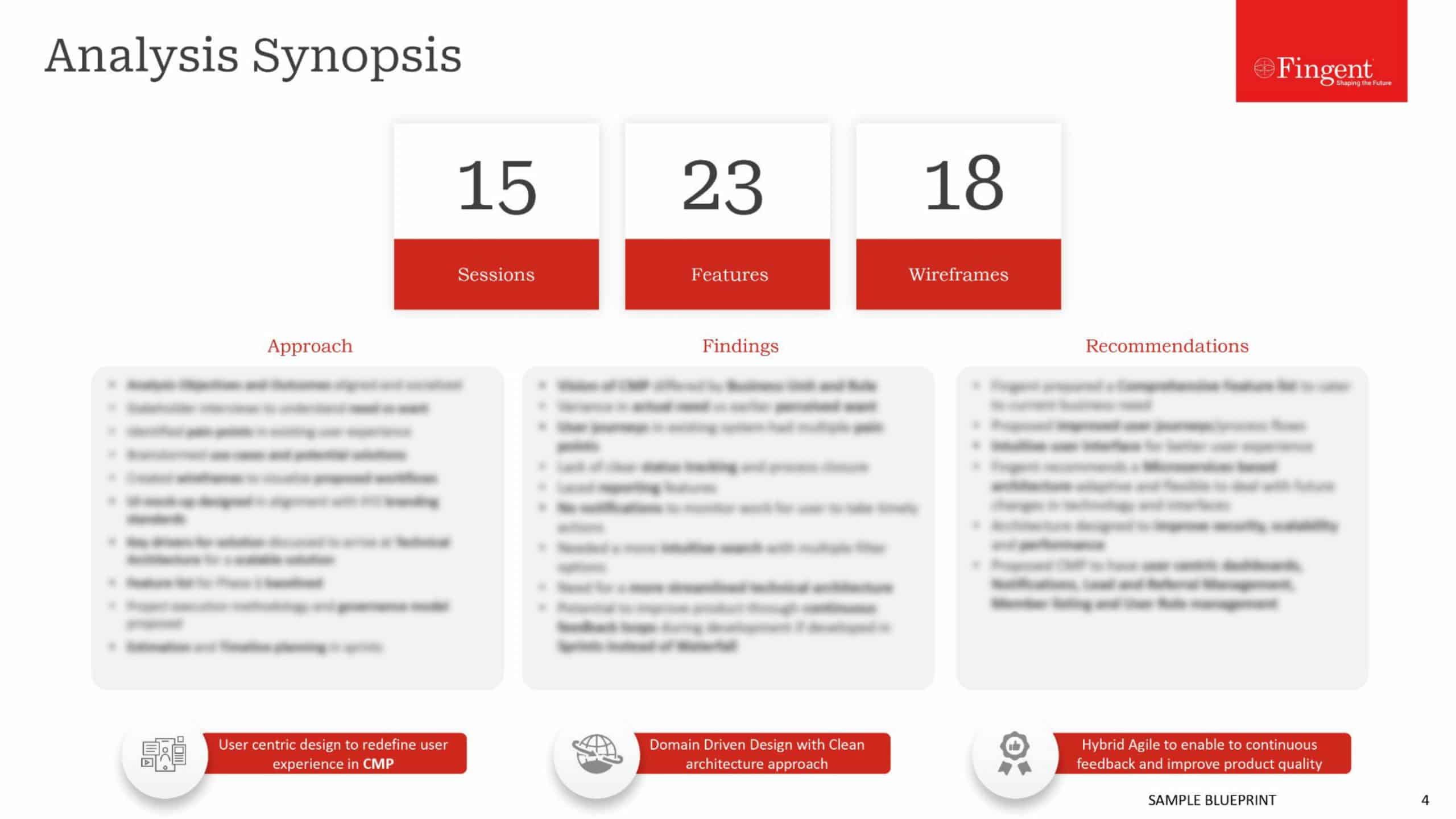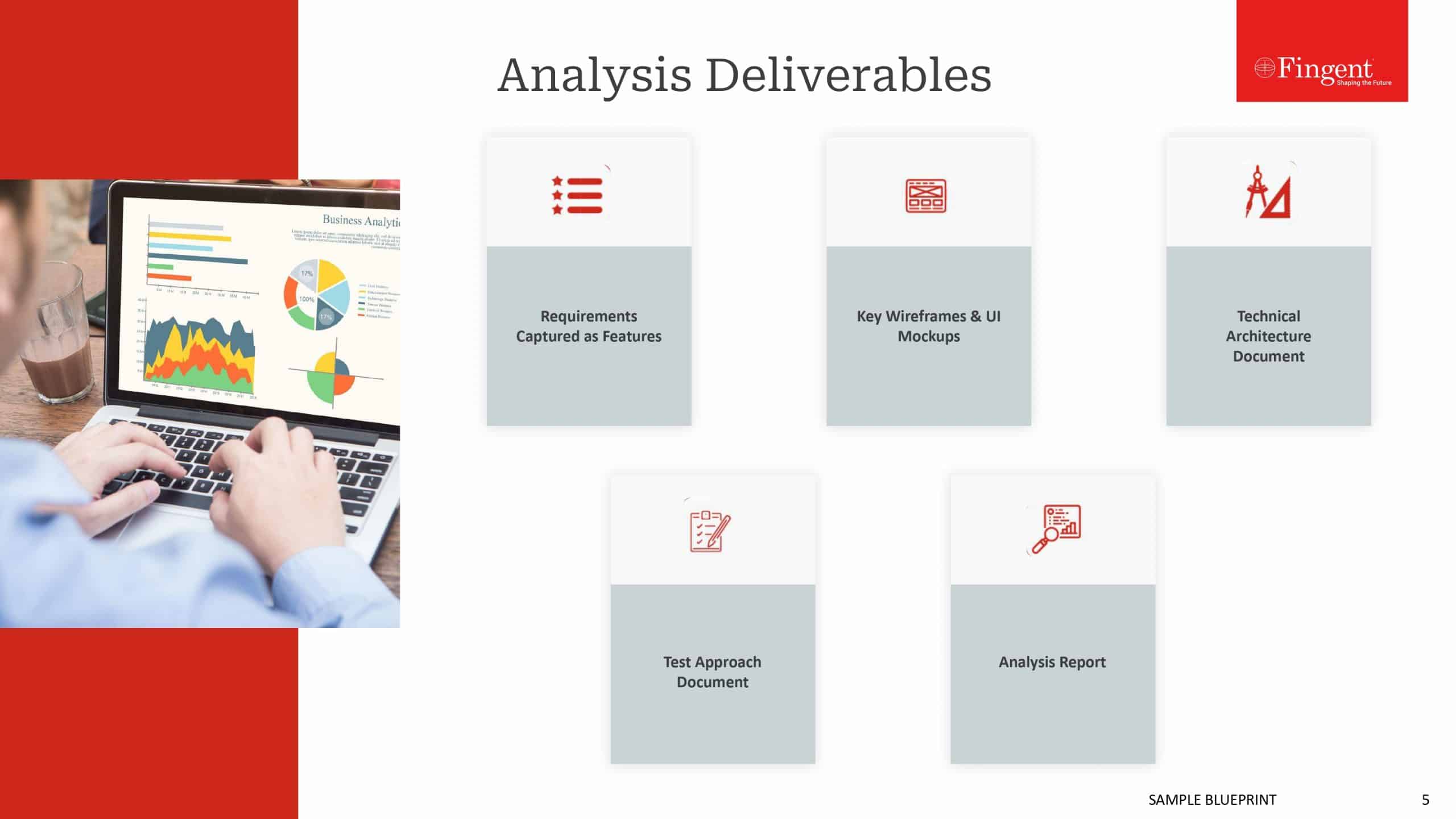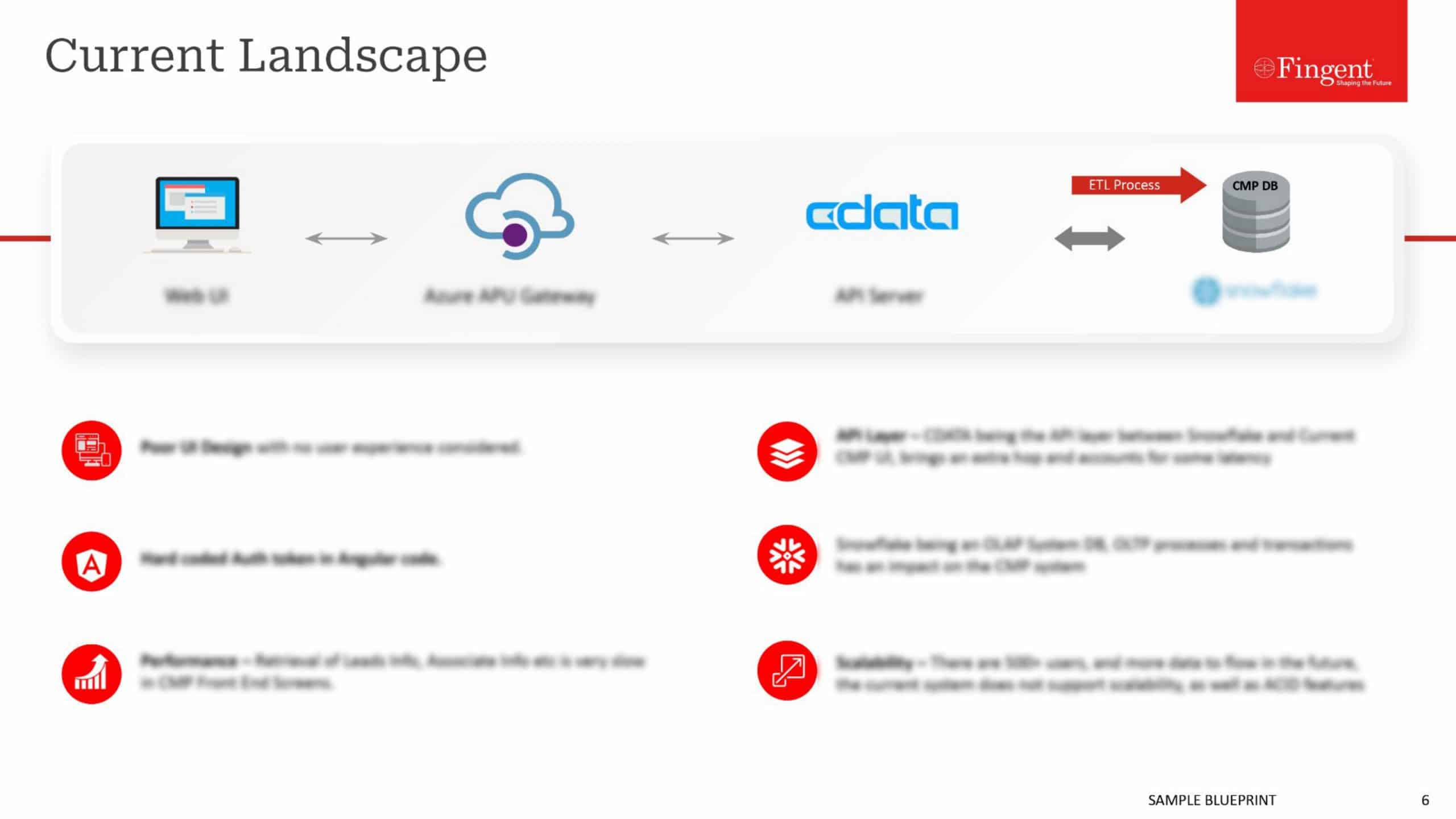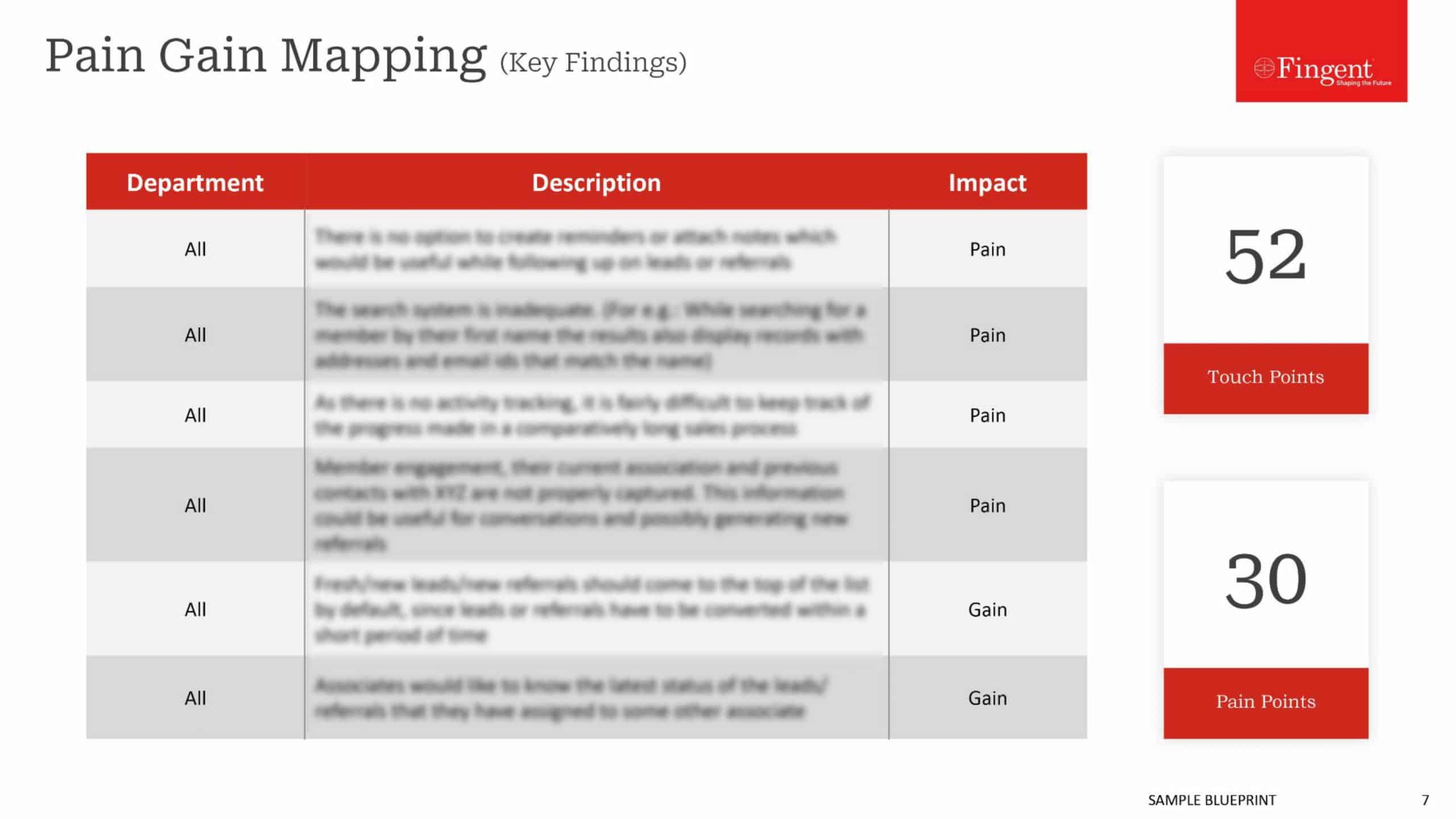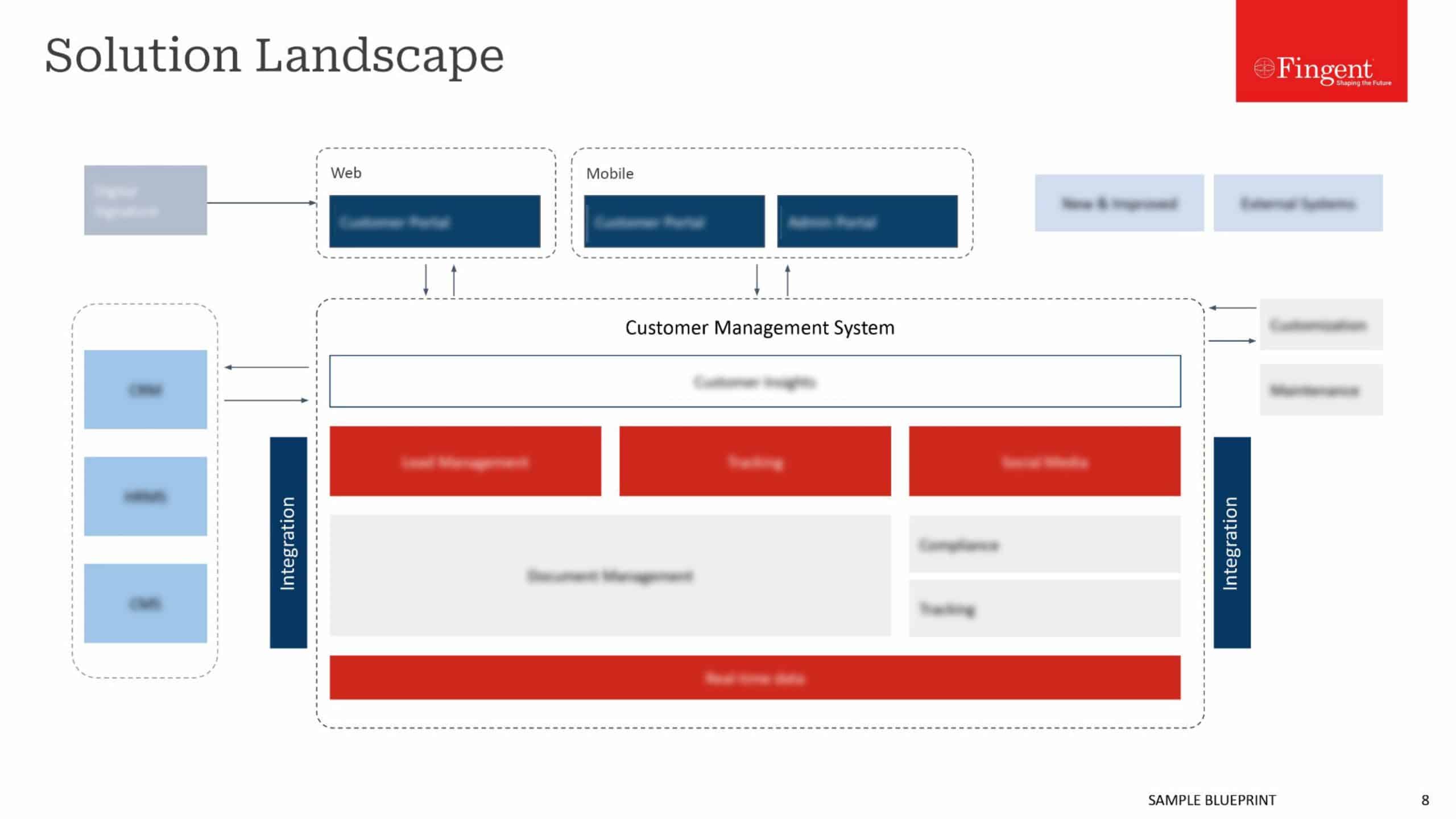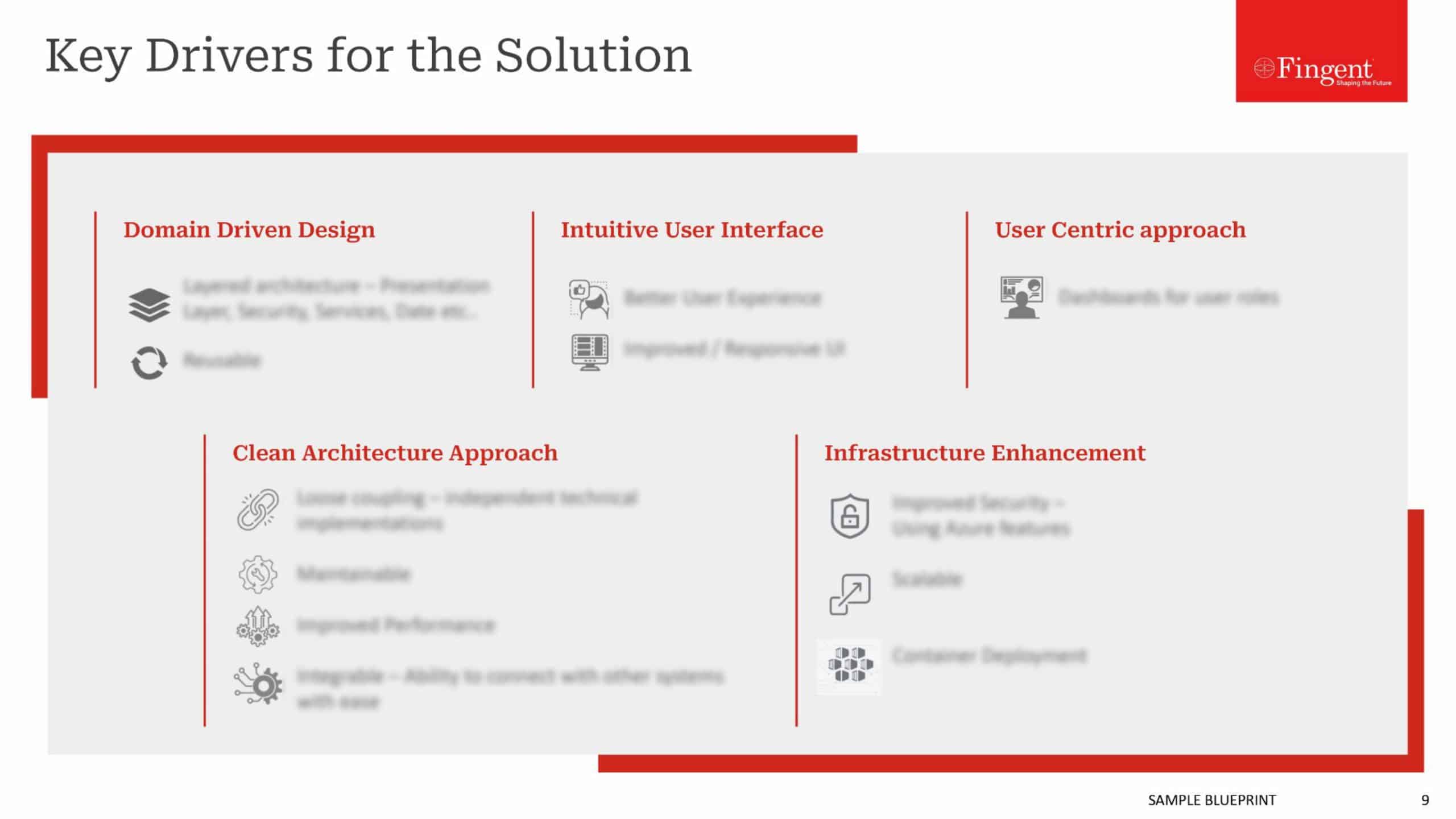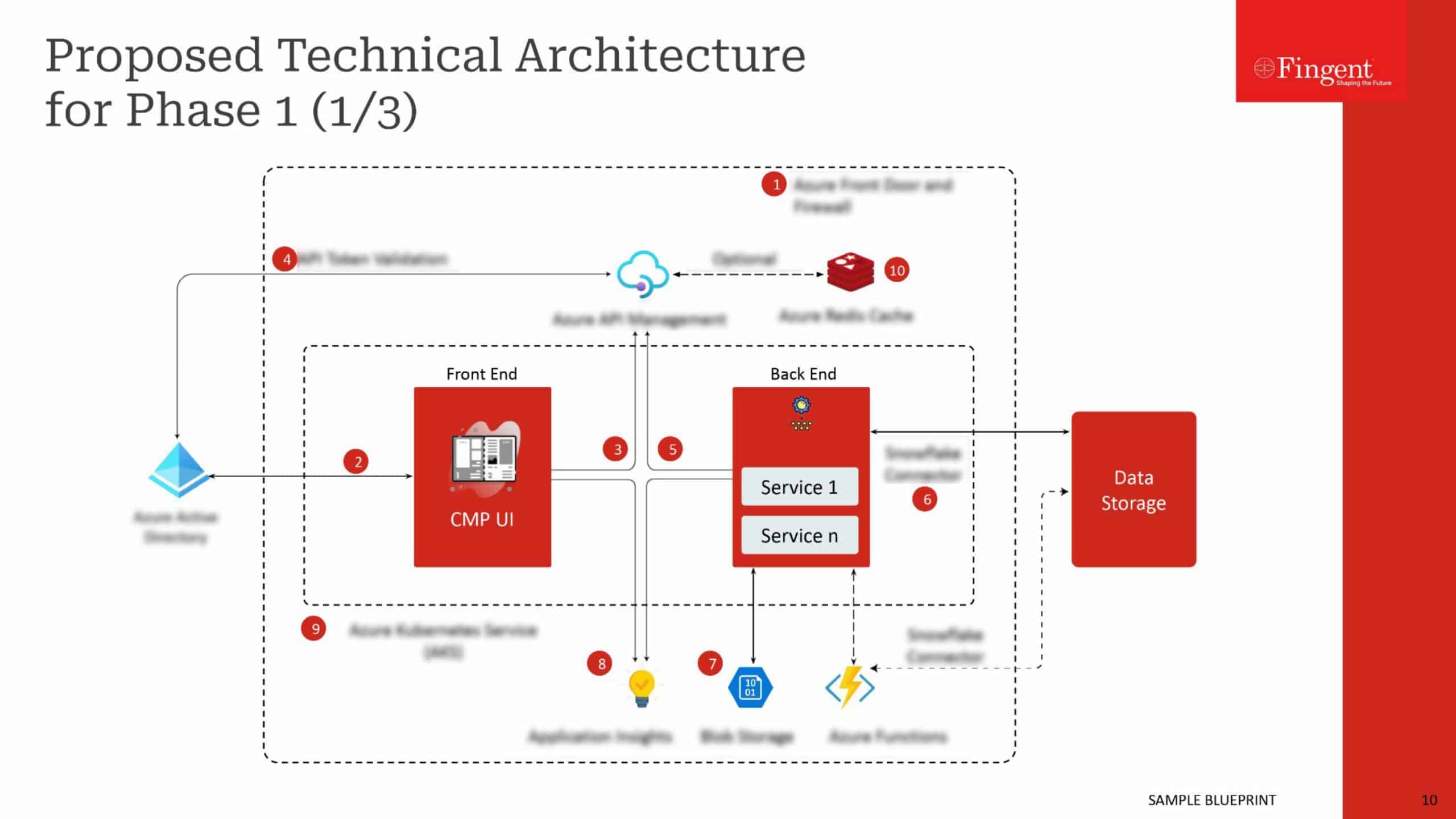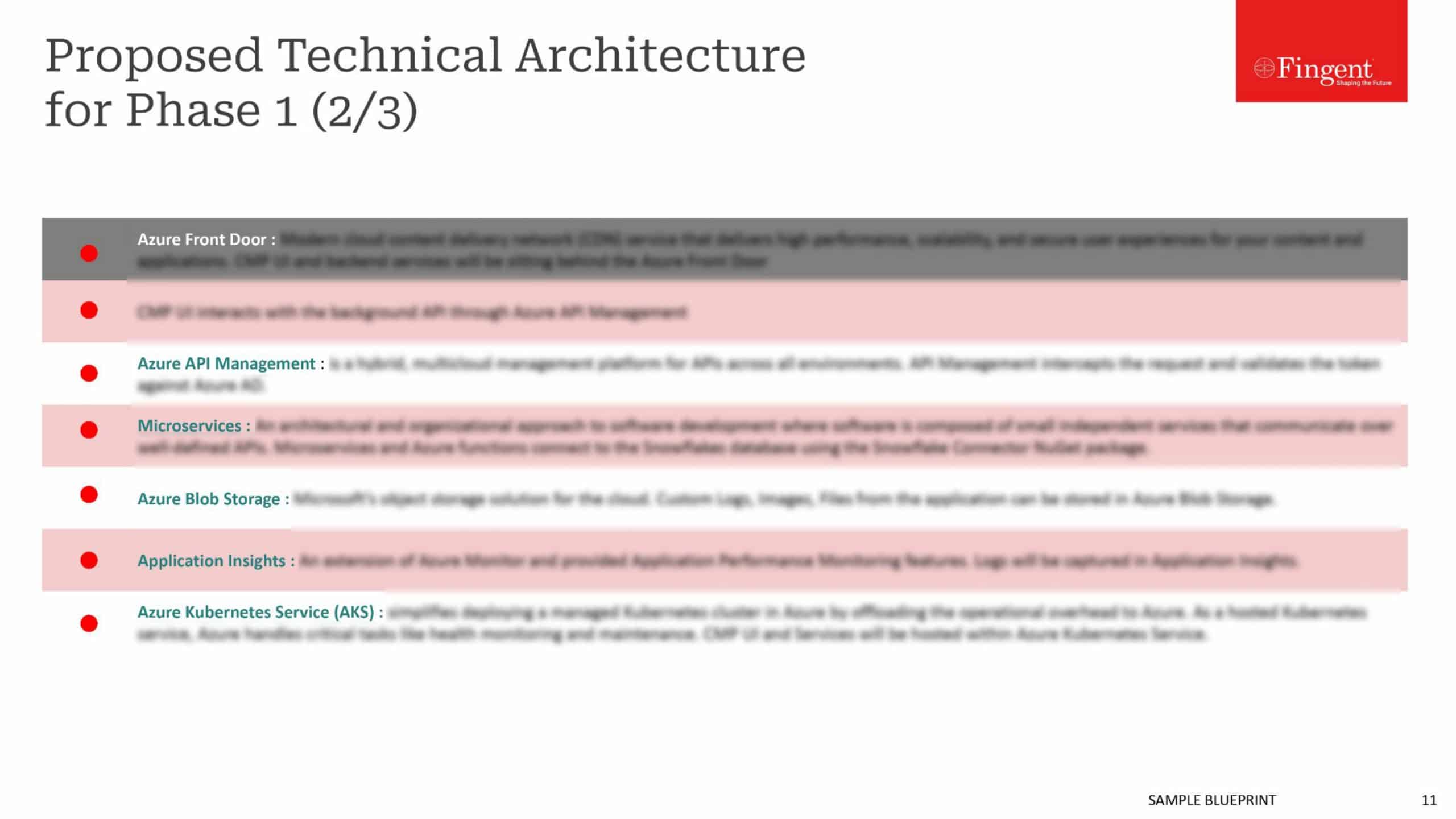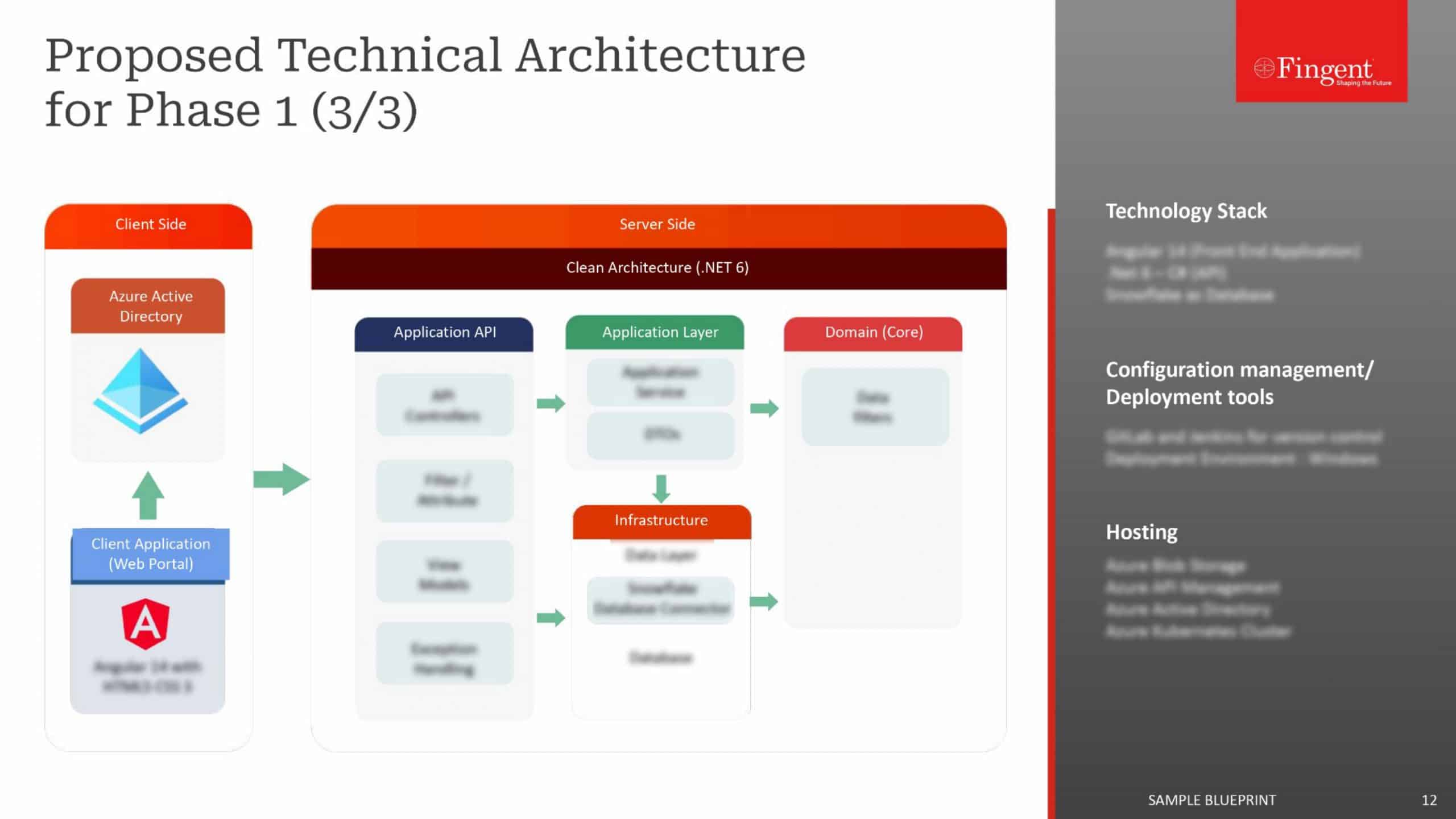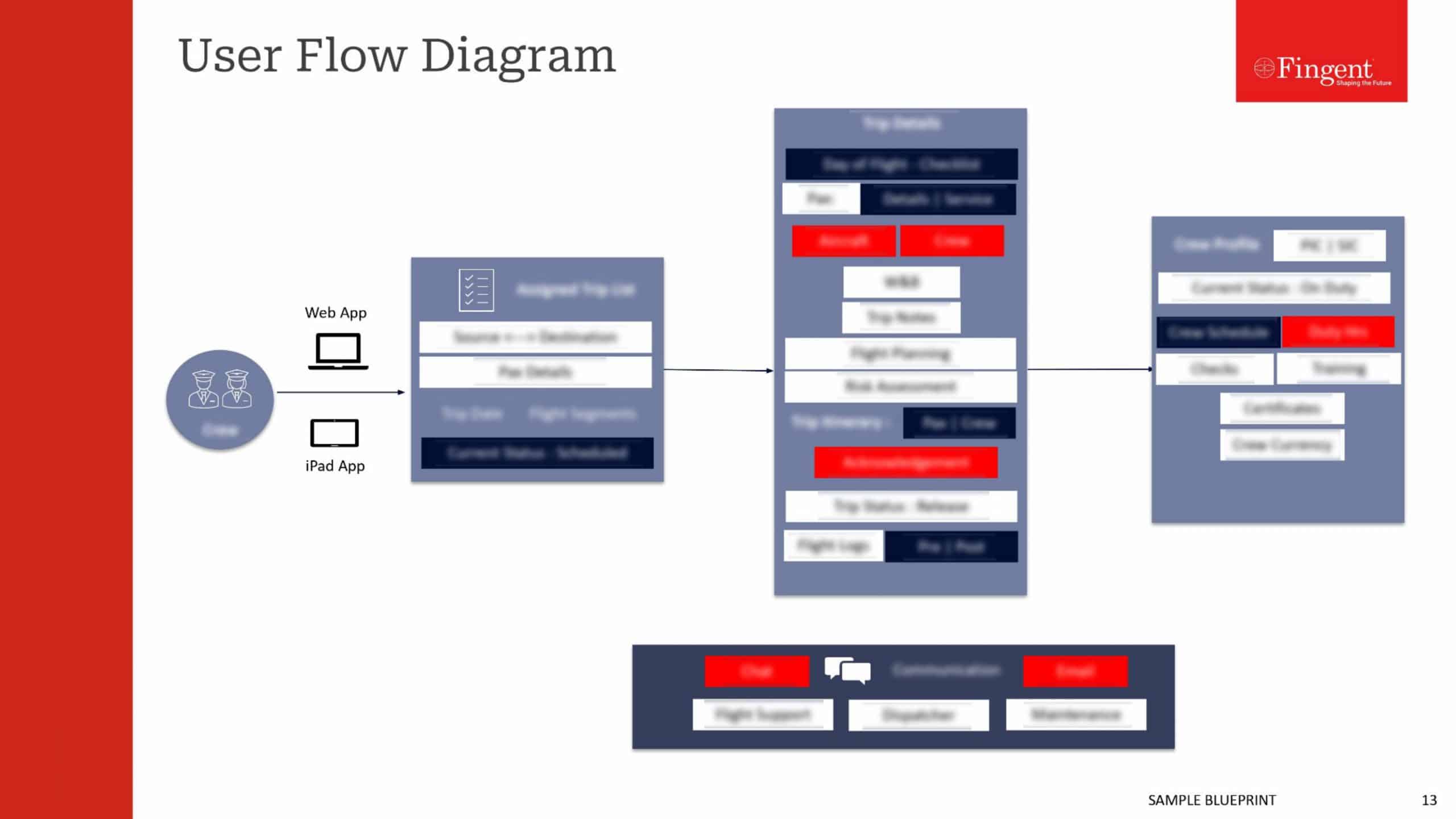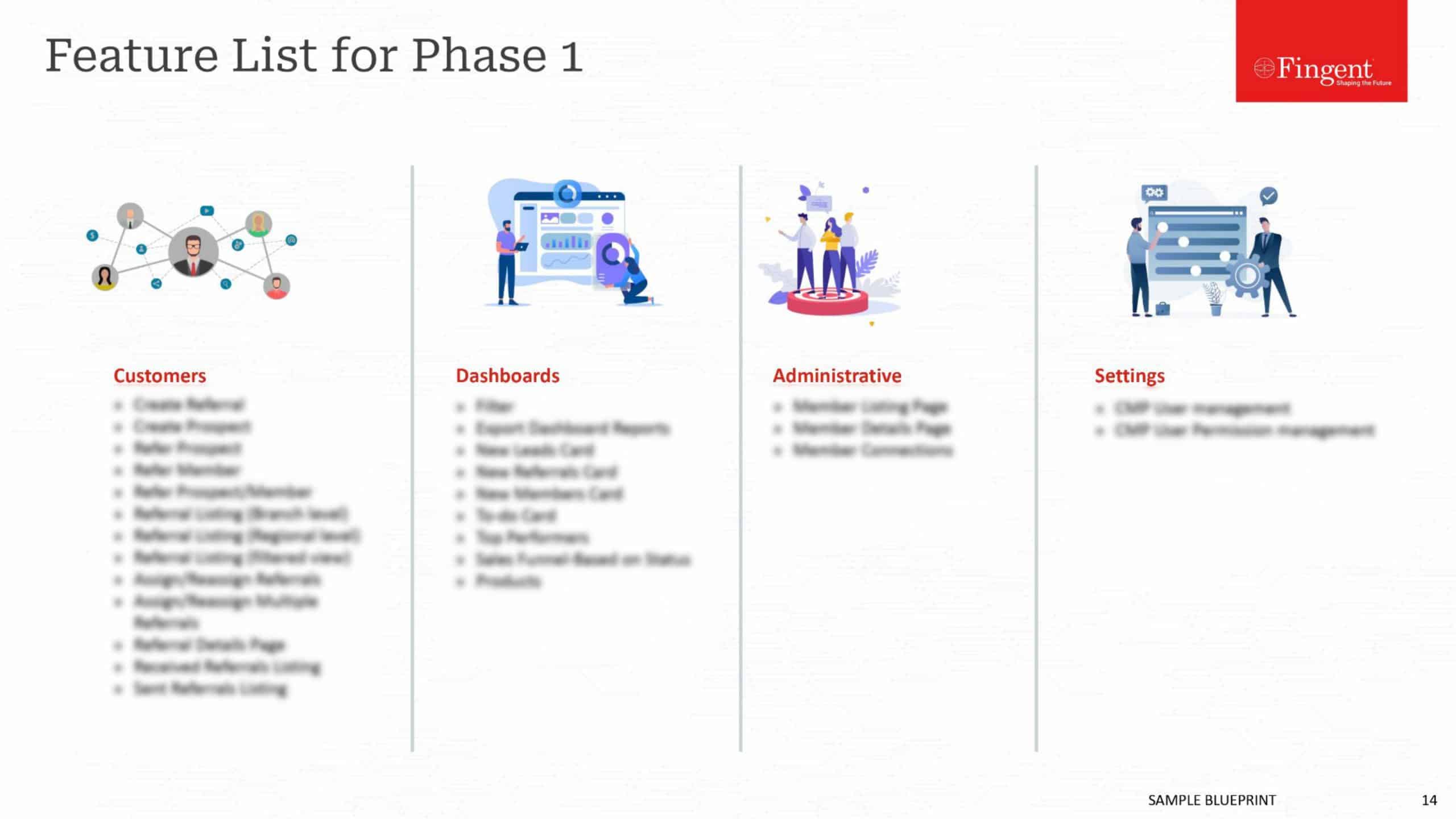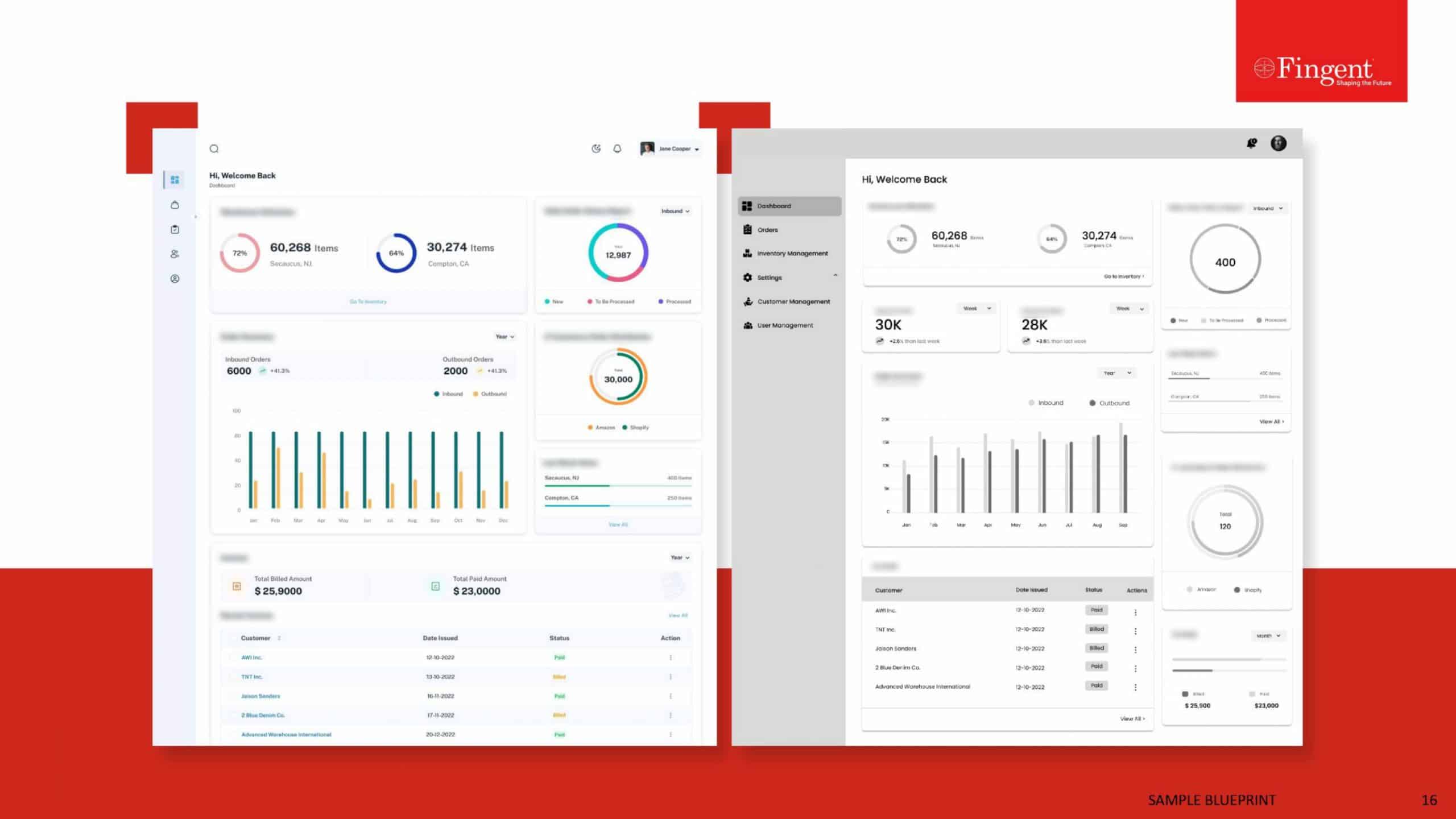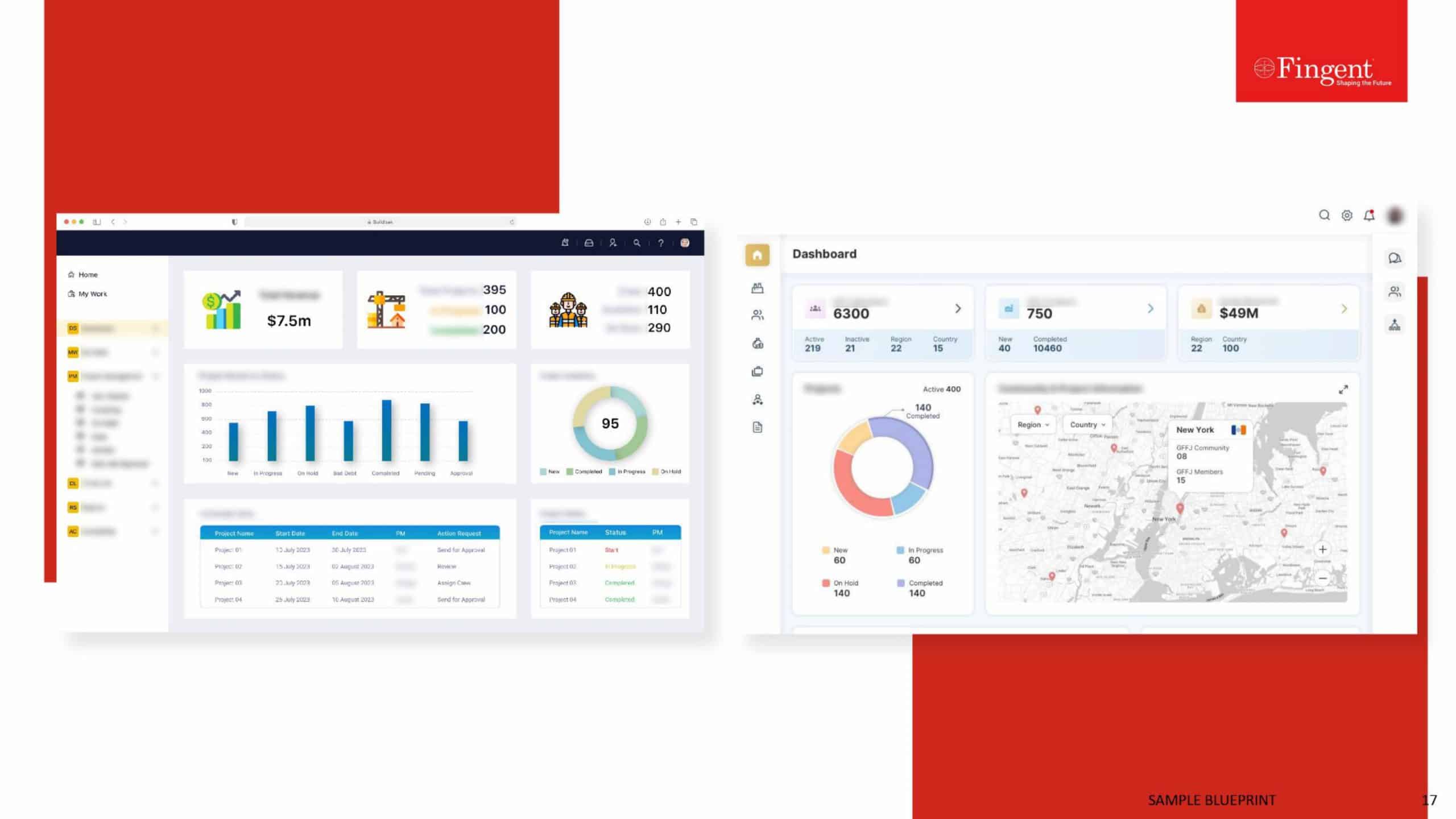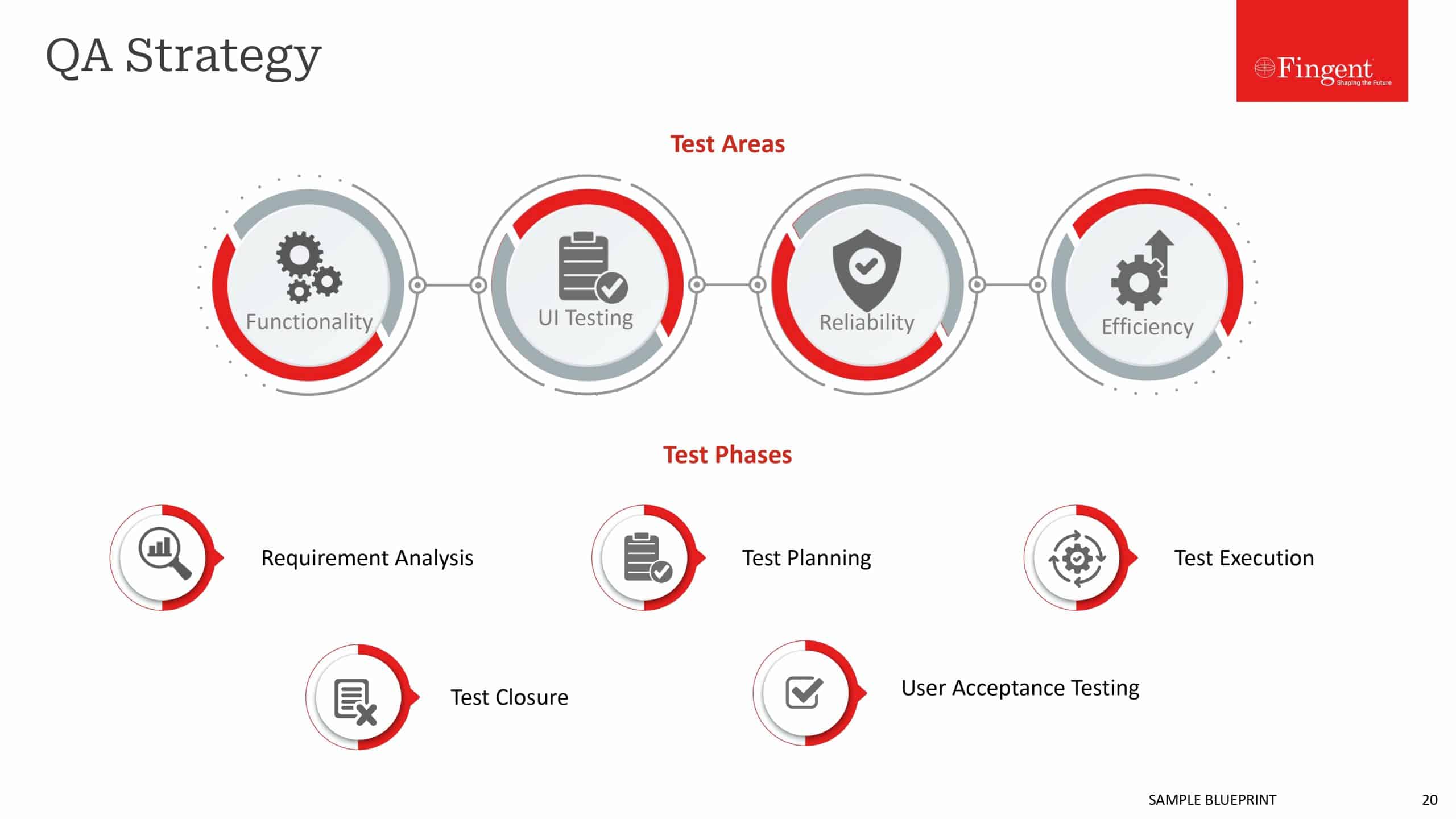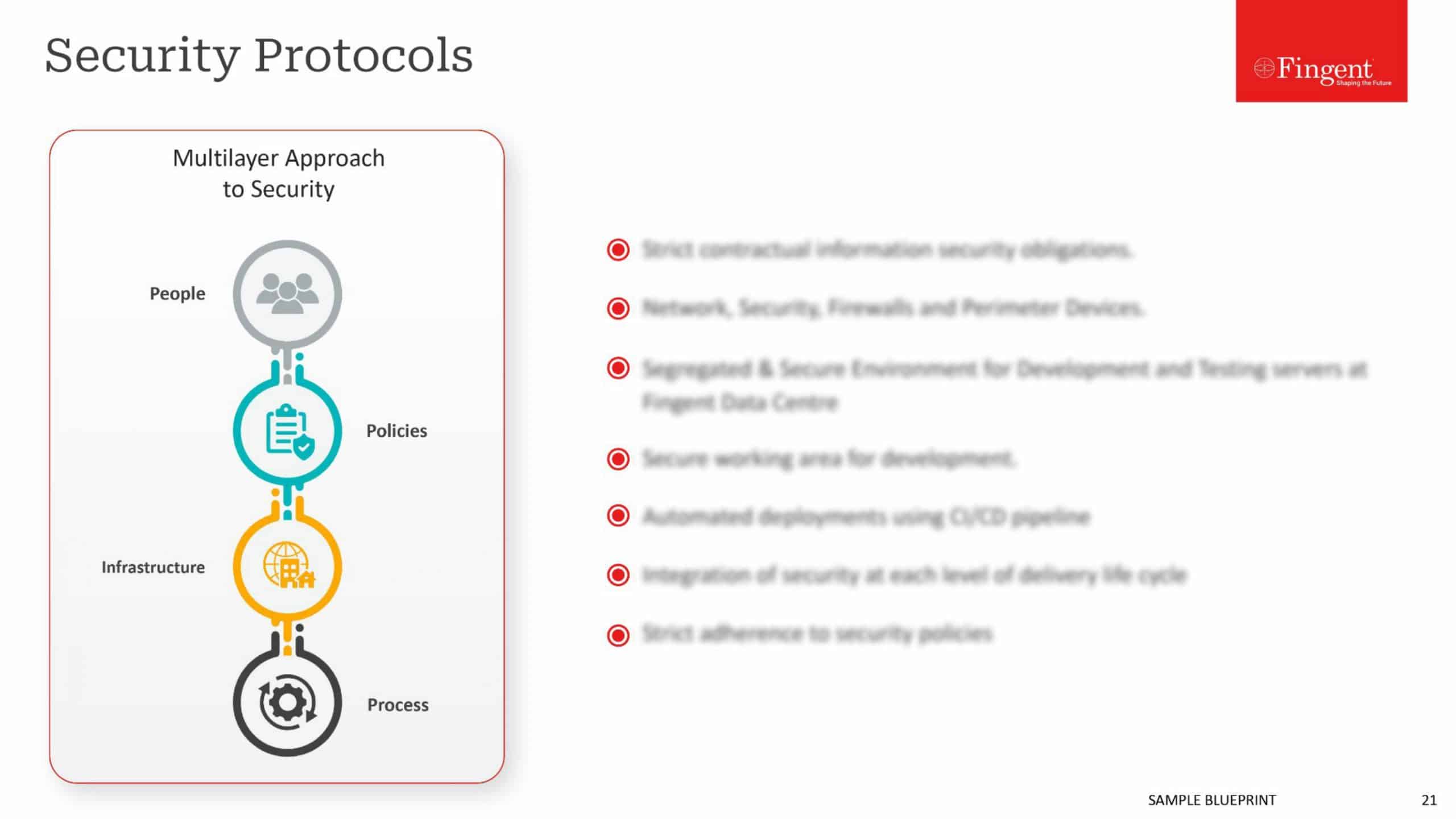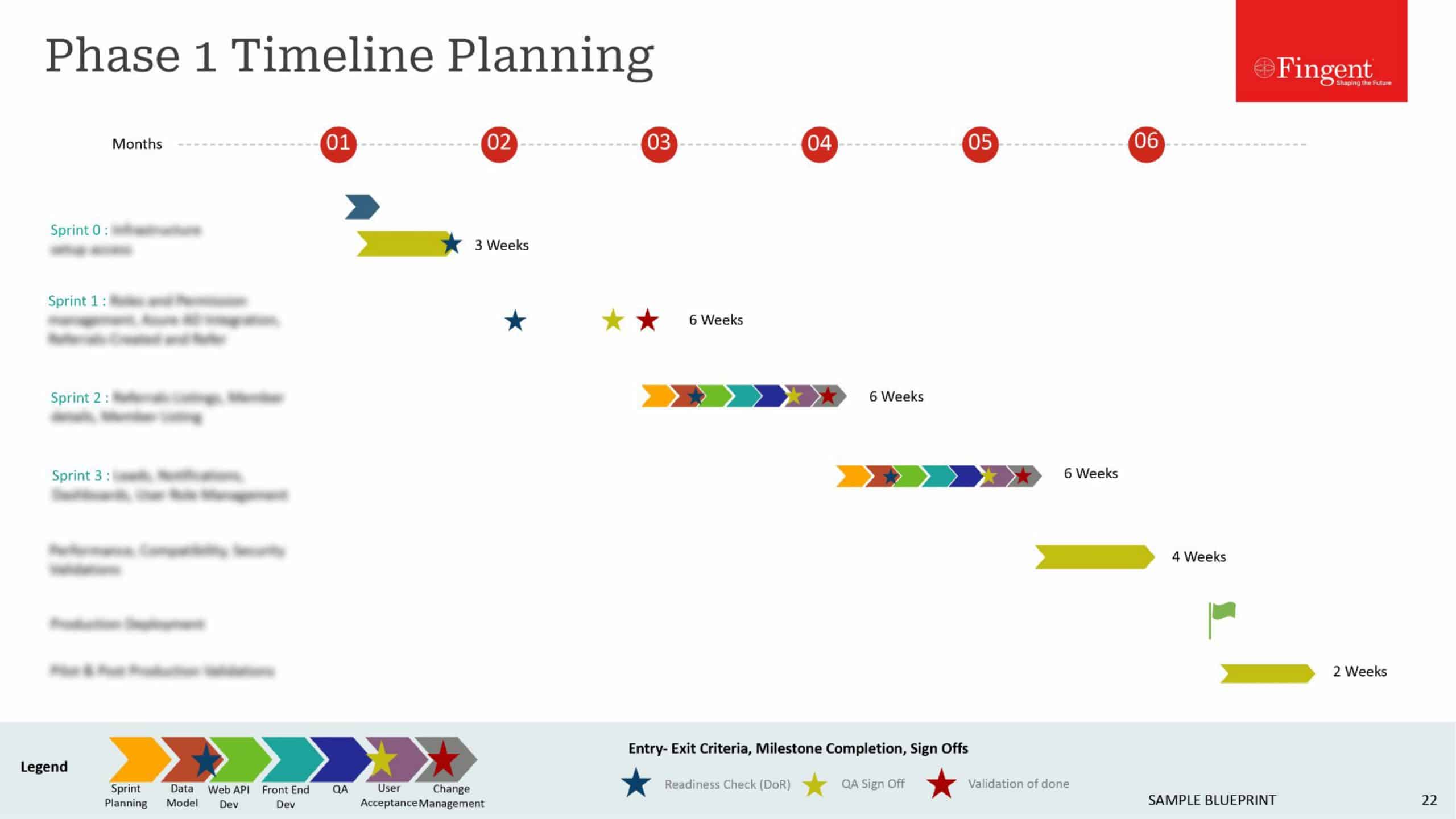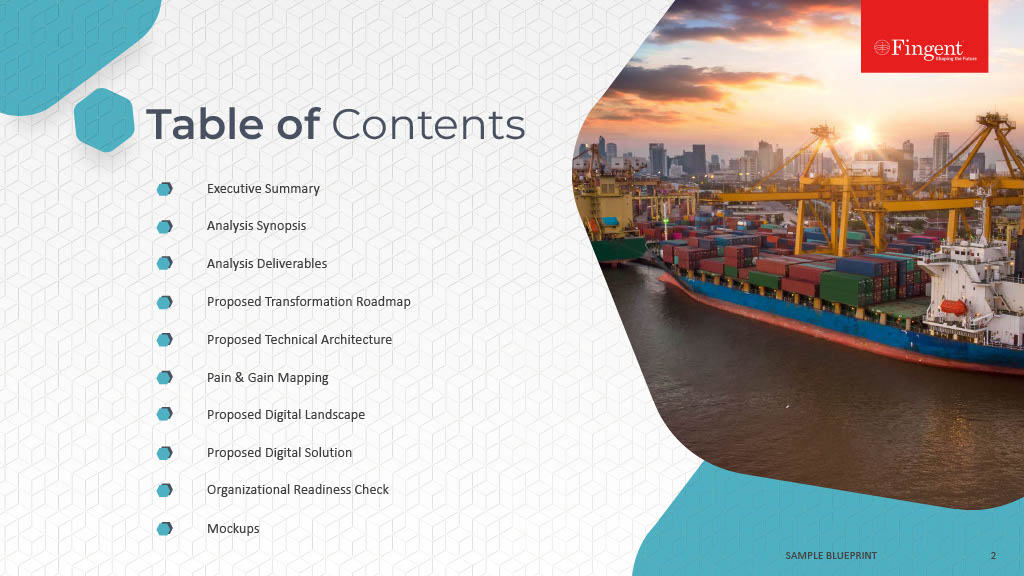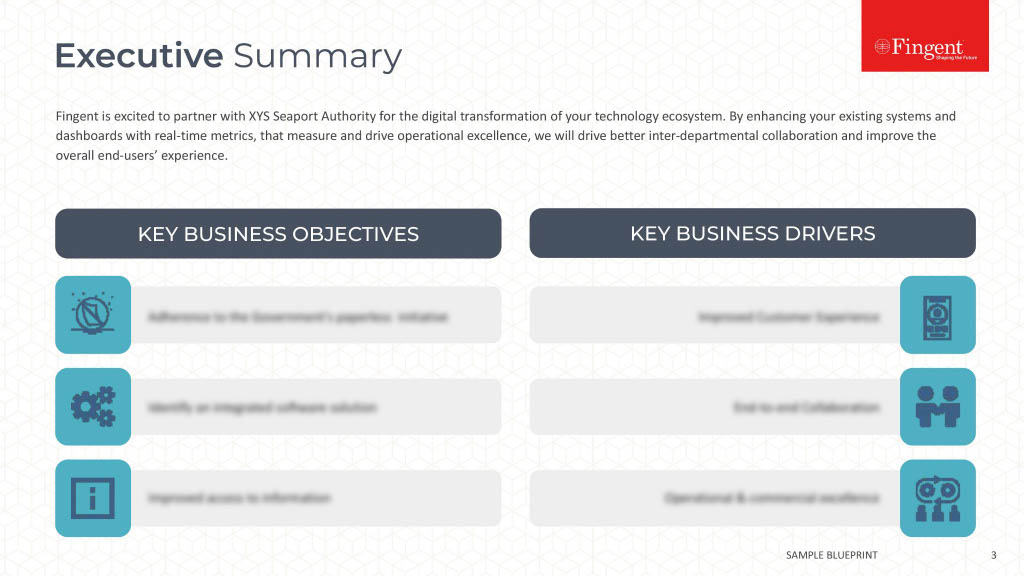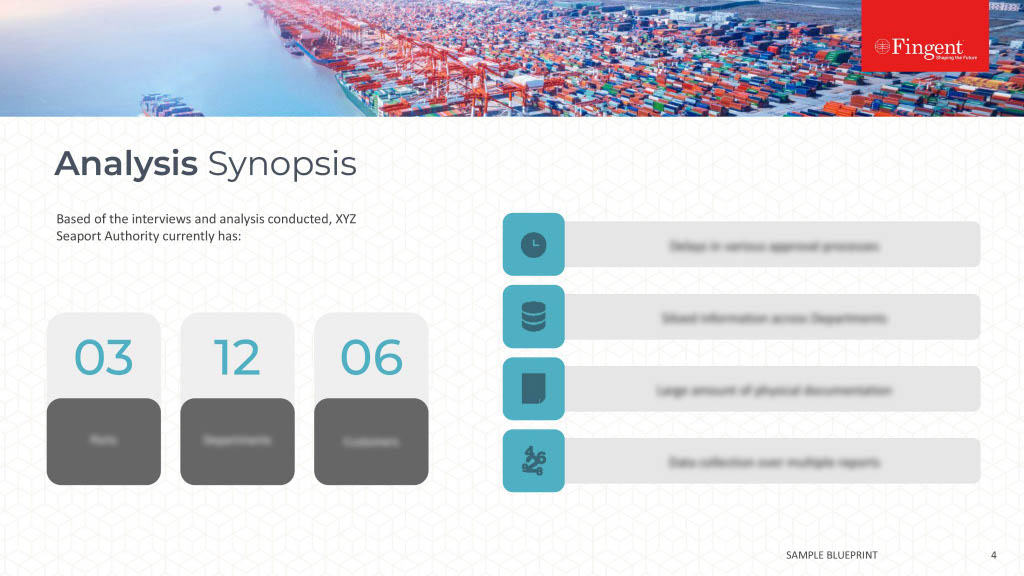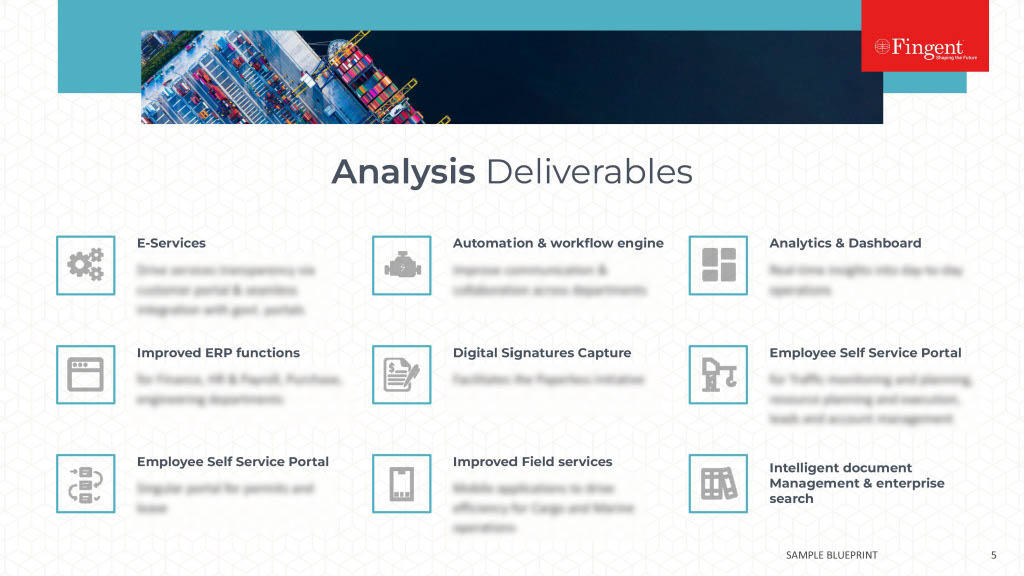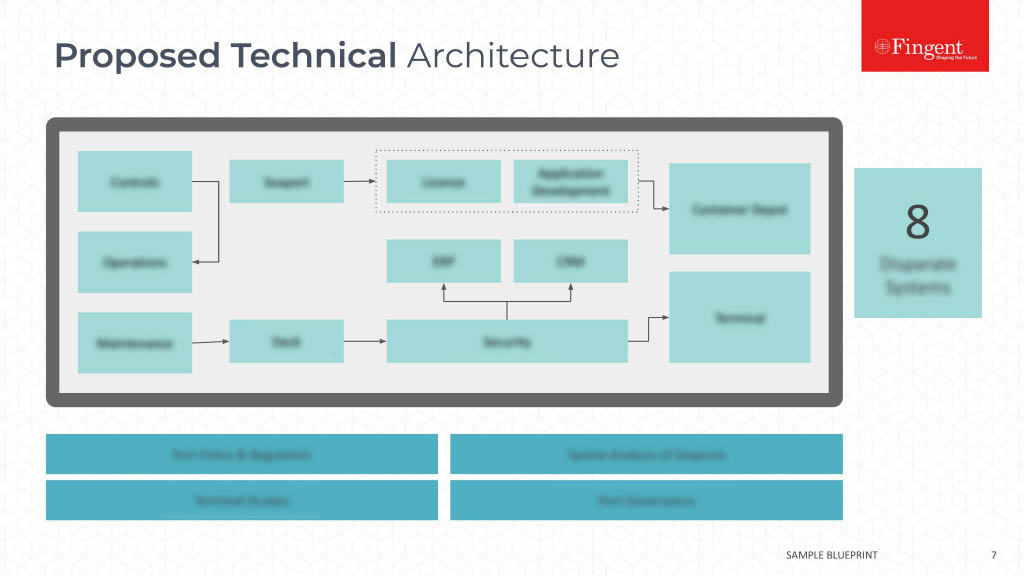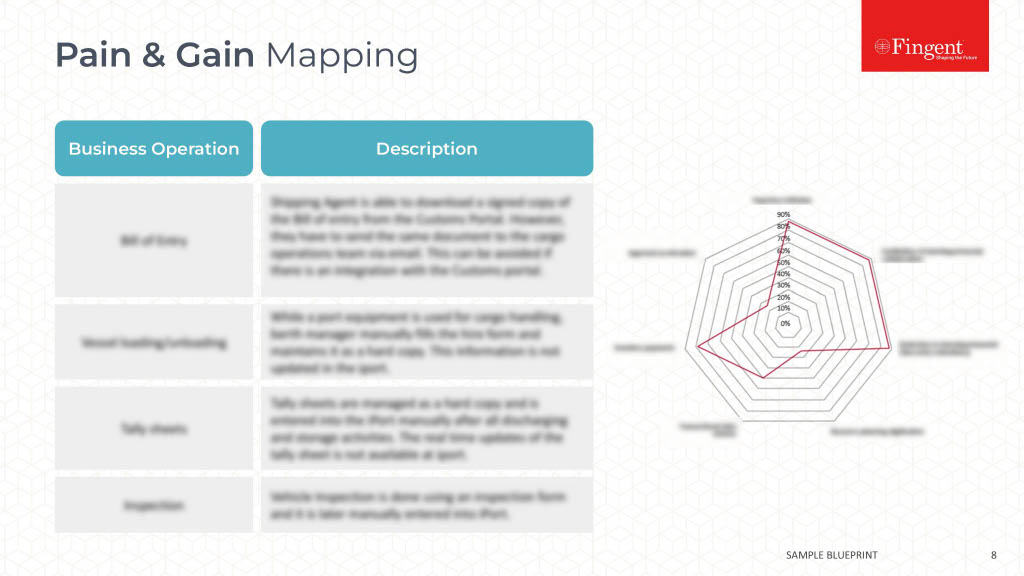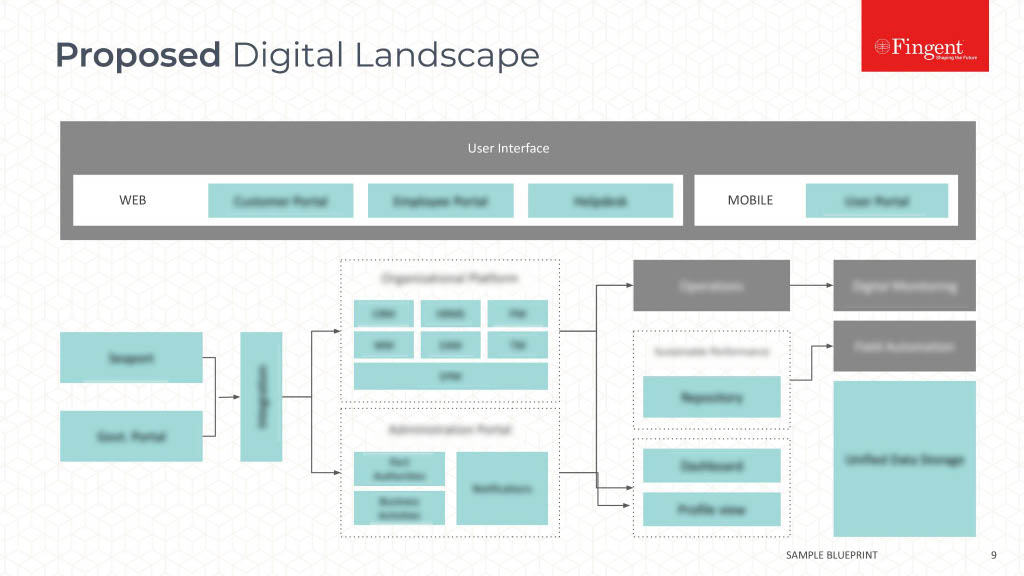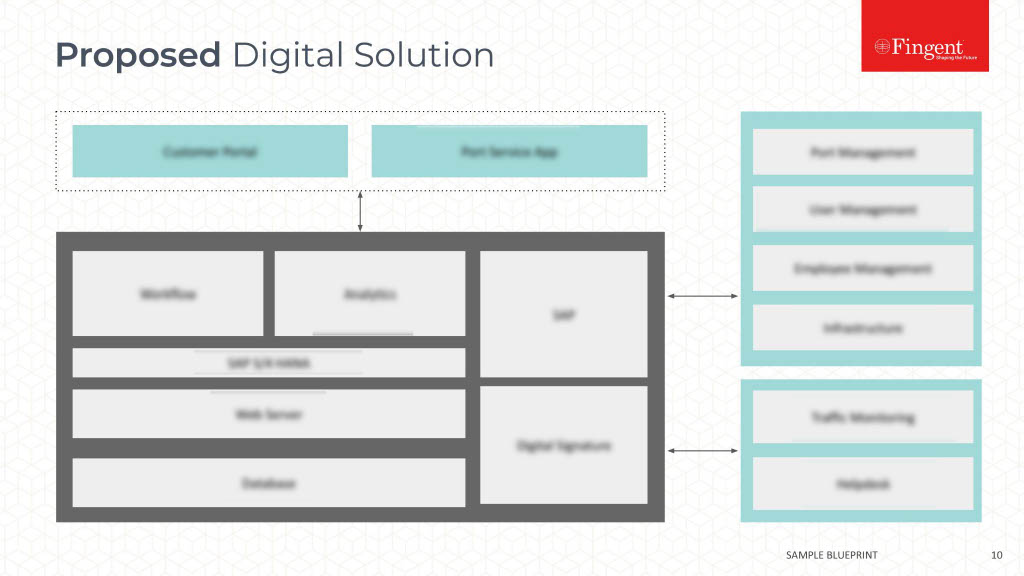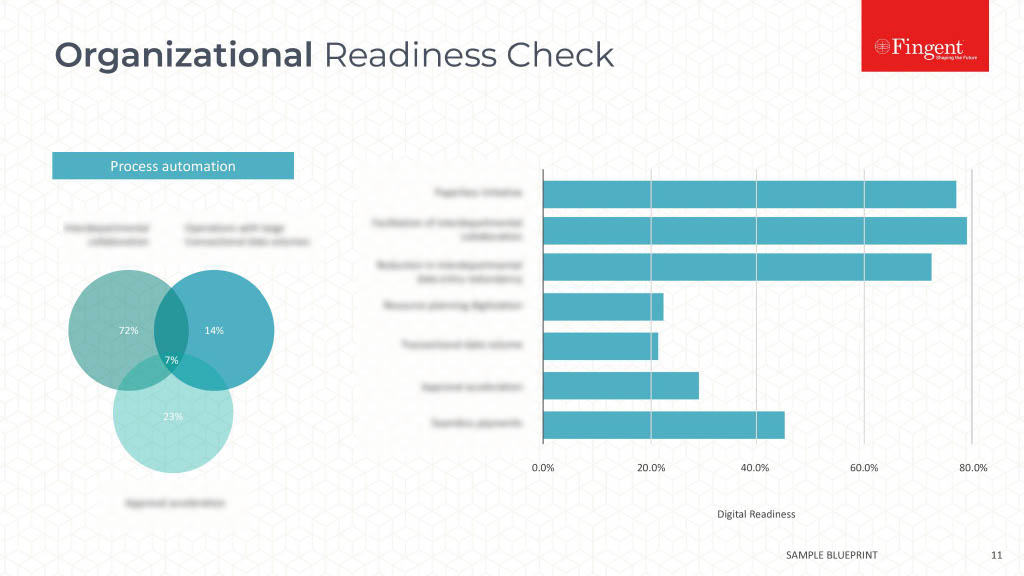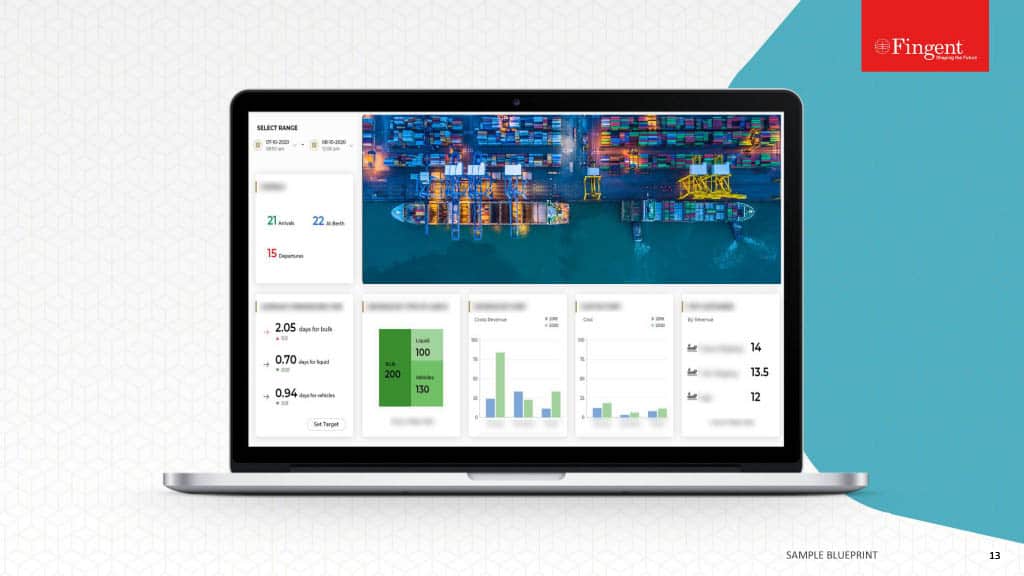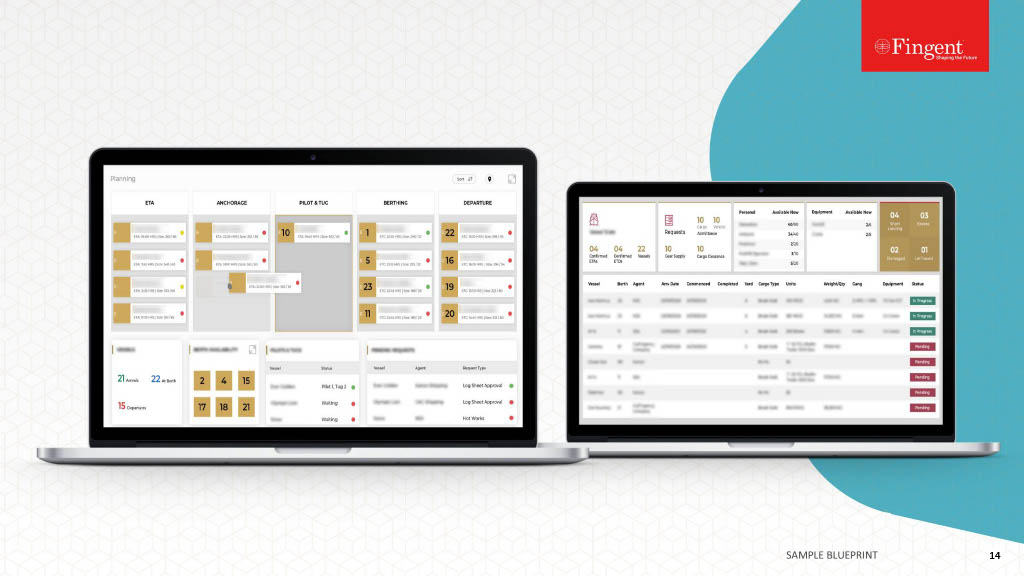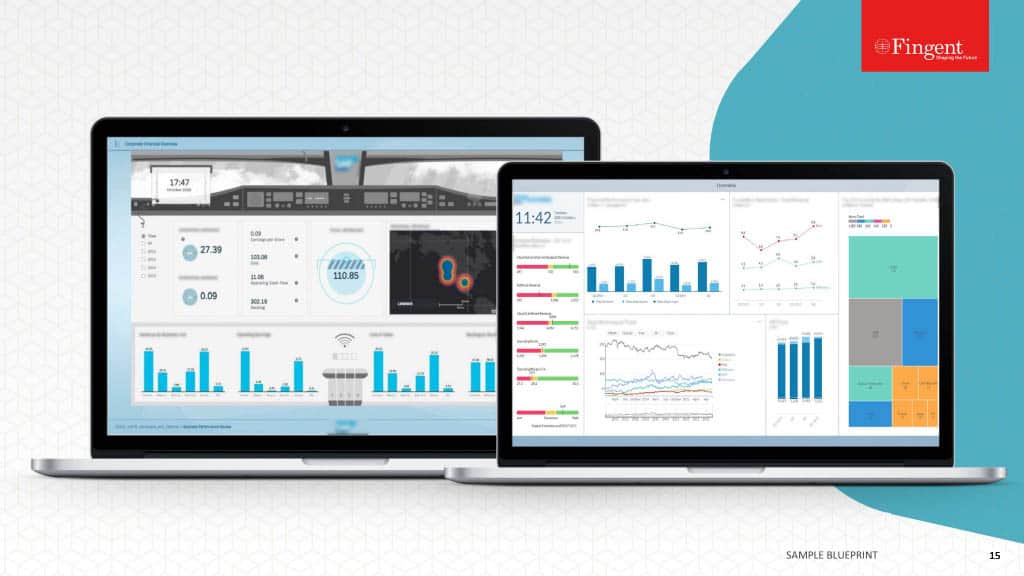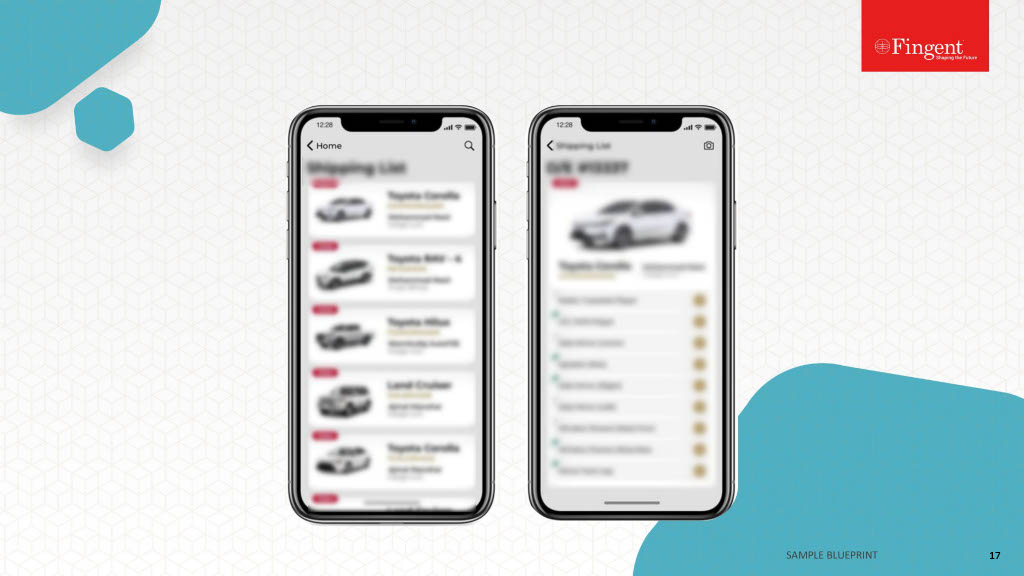Category: Digital Transformation
The strategic significance of advanced technologies as a critical business component is recognized by enterprises like never before. Besides business modernization and cost reduction, advanced technologies allow you to compensate for labor shortages, improve brand value and competency, and expedite research and innovation processes. However, several companies jump onto the bandwagon without properly understanding the practical applications and benefits of advanced technologies. The World Economic Forum indicates that only 23% of small and medium-sized enterprises (SMEs) worldwide can invest in and grow with new digital tools. This data proves why businesses should crucially analyze advanced technologies before adopting digital tools.
To streamline things, here’s a quick rundown of five advanced technologies we believe will help you cope with the new business and economic environment.
- Simplifying Workflows With Cloud
- Low-code Applications
- Robotic Process Automation (RPA)
- Document Data Extraction
- AI Assistants
As these technologies become more affordable and handy, businesses are ardently pursuing them to automate customer service, streamline workflows, differentiate products and services, and reach new markets. Depending on your budget, implementation timeline, priorities, and unique business requirements, our team at Fingent helps you build the roadmap for technology adoption.
Read more: How to gain maximum value from your technology investments?
Let’s take a closer look at the five inevitable technologies for business transformation today:
1. Simplifying Workflows with Cloud
Workflow management is a highly overlooked enterprise strategy that directly impacts productivity. Managing different stakeholders, heaps of confidential data, and a series of preset and conditional tasks manually can lead to several errors, such as employees missing key steps, policy violations, compliance issues, and monetary losses. By taking your workflows online, cloud-based workflow management applications increase your productivity.
Cloud-powered workflows or workflow management tools:
- Are scalable, centralized, customizable to your needs, easy to integrate, secure, reliable, and hassle-free.
- Offer a seamless and unified collaboration interface by preventing users from toggling between different messaging apps or communication channels.
- Reduce your dependency on the in-house IT team by passing on the software maintenance responsibilities to the third-party software vendor.
- Can be accessed via any authorized network (with approved access credentials), on any device, from anywhere, 24/7. This has been a huge game-changer for several companies that switched to remote operations during the pandemic.
Example of a Cloud-based Workflow Tool
Finding a cloud workflow management tool that can be customized to your company’s requirements is daunting. The platform should integrate well with your organizational processes without disrupting your workflow. This is where digital workplace applications like InfinCE make the difference.
With InfinCE Digital Workplace, Fingent has improved its productivity by 20% through real-time, effective, and easy collaboration. Data-powered dashboards, dedicated servers, collaboration apps, productivity tools, virtual desktops, private mobile apps, and a host of exceptional business management features enabled us to achieve a significant operational breakthrough in streamlining workflows.
Read the full case study here.
2. Low-code Applications
Gartner estimates that by 2025, 70% of enterprise applications will use low-code or no-code technologies. Digital business transformation requires pushing custom software solutions to the market at lightning speed. This demand has given rise to low-code applications that will break the technological and organizational silos of application development, automation, integration, and governance. Low-code development enables business users to bring innovative ideas to life by dragging and dropping low-code elements through a graphical user interface.
Simply put, low-code development enables “citizen” developers or non-tech users (such as business analysts or marketers) to build dashboards and survey or contact forms faster. On the other hand, professional developers can leverage low-code techniques to perform more efficient tasks, such as legacy application modernization or back-end integrations, with improved agility and velocity.
Use Cases for Low-code Applications
- Customer engagement applications and portals
- Mission-critical applications such as ERP software, payments manager, etc.
- Data analysis applications, BI dashboards, and data management software
- Mobile apps for customer engagement
- Order processing, inventory, order fulfillment, supply chain, and accounting apps
Salesforce Lightning, Microsoft Power Apps, and Zoho Creator are some of the leading low-code applications today. SAP users can leverage the unified low-code/no-code (LCNC) solutions on the SAP Business Technology Platform (BTP) to rapidly build and extend applications and automate tasks and processes.
Read more: Low Code/No Code Development with SAP BTP: How It Is Turning the Future of Enterprise Resilience
3. Robotic Process Automation (RPA)
Robotic Process Automation (RPA), often called software robotics, is an easy-to-use software technology that allows anyone to automate digital tasks within their business processes. RPA allows users to create software robots or “bots” to learn, emulate, and execute rules-based business processes. According to Forrester Research, RPA software revenue is expected to reach $6.5 billion by 2025, while RPA-related services revenue could hit $16 billion in the same year.
Potential Use Cases for RPA
We offer free proof of concepts to help you understand how RPA can improve your business efficiency and customer experience. Some of our top use cases include:
- Automating discharge protocols and data management to increase HR productivity in healthcare.
- Daily retail processes automation, such as order processing, inventory and warehouse management, etc., to save time and resources.
- Reducing customer wait times through RPA-enabled chatbots that answer customer queries in real time.
- Error-free, automated billing and invoices to keep your financial systems and reports up-to-date.
- HR teams can automate personnel data and records maintenance, streamline onboarding, and seamlessly manage payroll.
4. Document Data Extraction
Extracting quality data from unstructured or poorly structured data sources and documents for further processing, migration, and storing has been the biggest obstacle in automating back-office operations. If you enter structured invoices into a robust ERP tool like SAP, your payments can be automated, and system records can be generated automatically. Due to the high costs of data extraction, several businesses extract only critical information fields, for example, the payment field within an invoice. Businesses are compelled to manually extract data from other important fields, such as validating the invoice’s compliance with VAT.
AI-integrated OCR Software for Document Extraction
Optical Character Recognition (OCR) is an affordable, game-changing technology that automatically extracts data from the digital images (photos) of large files, scanned documents, and sub-titles or captions superimposed on an image. It reduces the time spent in manual data entry and extraction by automatically converting typed, handwritten, or printed text into machine-readable text. AI-powered automated data extraction tools like DocuSign, Docsumo, Kofax Capture, and Amazon Textract leverage OCR technology to reduce the chaos involved in document data extraction and enable businesses to create an efficient workplace.
Our team helps customize document data extraction software that can save you time and money by eliminating transcription and transposing mistakes.
5. AI Assistants
One of the most common examples of small business automation today is using AI-powered virtual assistants. They can save your employees’ productivity by automating the most repeatable customer interactions, such as technical support, appointment scheduling, lead qualification, and order management. AI virtual assistants like Google Assistant and Alexa can understand and act according to your voice commands and customize responses to your queries. Understanding customer intent through natural language processing and recognition allows AI assistants to maintain a human-like conversation.
Chatbots are a popular category of AI assistants designed specifically for text-based channels like SMS, email, and live chat. Recent years have witnessed a rise in chatbot adoption among several business verticals, product and service lines, websites, mobile apps, customer portals, etc. Data shows that 58% of B2B companies and 42% of B2C websites use chatbots to make their websites and mobile apps more interactive. More than 56% of businesses believe chatbots to be driving digital disruption in their industry.
Case Study: AI Virtual Assistant for HR
Fingent’s HR team was pressed to transform their service delivery model as routine, transactional tasks affected their performance and efficiency. To solve their struggle, Fingent developed MUSA, an AI-powered virtual assistant (a chatbot), and integrated it with Fingent Hub, Fingent’s internal employee management system. MUSA is short for Multi Utility Assistant. Employees can ask MUSA any queries related to HR and IT DevOps processes at Fingent, and they’ll get answered instantly. MUSA has improved our HR team’s response time by minimizing their workload and allowing them to focus on areas requiring more attention.
Business and Technology Are Inseparable!
Gartner writes that businesses with technology employ advanced tech to boost customer experience and revenue growth, clearly understand their priorities, goals, and strategies, and invest in solutions tailored to their needs. Technology allows businesses to lower the walls within and between their organizations, customers, providers, suppliers, etc. Organizations perceiving technology as a key business consideration will be able to match the pace of business change and stay relevant and competitive.
How can your business embrace growth in a new era of transformation and technology trends?
If you’re getting caught in the technology maze, take a quick break to contact us. Our consultants can simplify your technology adoption strategy based on your priorities, customer needs, financial resources, and technical requirements.
Stay up to date on what's new

Featured Blogs
Stay up to date on
what's new



Talk To Our Experts
From the moment we wake up, mobile apps have become an inseparable part of our lives! From sleep trackers to fitness apps to alarm clocks and everything in between, we rely on mobile apps to accomplish almost every daily task. Mobile apps also play a vital role in more complex choices in life, like dating. A world without smartphones and their apps cannot exist any longer. In such a scenario, businesses must continue to make smartphones smarter to stay relevant. The best way to achieve that is to empower mobile apps with Artificial Intelligence.
Are you wondering if your industry can benefit from AI-powered mobile apps? This blog will discuss that and explain how you can benefit from them. Let us begin by understanding how AI-powered mobile apps are impacting business.
Impact of AI-Powered Mobile Apps on Businesses
“The measure of intelligence is the ability to change,” said Albert Einstein. That is a reality in technology. Growth requires change, and change requires intelligence. AI achieves growth by bringing in that much-needed change in mobile apps.
AI is instrumental in driving innovation in mobile apps. Today many users neglect applications that do not have innovative features. This calls for developers to be on the ball when it comes to facilitating digital transformation with the help of AI.
AI-powered apps are experiencing higher than anticipated demand. According to Fortune, the AI market size is projected to grow from USD 387.45 billion in 2022 to USD 1,394.30 billion by 2029. A staggering figure indeed!
Well, that is not all. Here are some facts that are keeping mobile app developers and publishers on their toes:
- There are over 6.5 billion smartphone users worldwide.
- On average, an American looks at his phone 344 times each day. That is once every four minutes.
- 88% of mobile time is spent on mobile apps, and the app percentage continues to increase yearly.
- 47% of established organizations have applied an AI strategy to their mobile apps.
AI-powered mobile apps can help businesses conquer their market. Let us understand why and how they can prove to be game-changers for top industries.
Top Industries That Can Benefit from AI Mobile Apps and How
Mobile apps allow users to do many things more conveniently, quickly, and smartly. AI-powered mobile apps have turned smartphones into on-the-go computing machines. That is why many top industries leverage it to provide new solutions, engage their customers, and thus stay on top of their competition. Here are examples of five top industries that are benefiting from mobile apps:
1. Ecommerce
eCommerce customers prefer to use retail apps over mobile websites for their shopping needs. Top companies like Amazon increased their sales by engaging with and offering customer deals through mobile apps.
It was also noted that mobile apps somewhat level the playing field for small businesses trying to compete with established businesses in their sector. Mobile apps also increase the probability of customers purchasing more than what they would buy when they visit the website. It is imperative that businesses adopt AI-powered app development as part of their growth strategy.
2. Healthcare
AI applications can build sophisticated machines, analyze chronic conditions and quickly provide medical data to medical staff. Using AI-powered mobile apps in the healthcare industry can minimize in-person doctor visits allowing doctors to quickly and efficiently treat their patients in real-time. They improve the medical facility and expedite services.
Fitness apps have become unbelievably popular after the pandemic. The development of AI-powered mobile apps also encourages people. When fitness apps are merged with health apps, they can measure health parameters like blood pressure and pulse. AI-powered mobile apps can also be synchronized with wearable devices.
3. Education
AI-powered mobile apps allow teachers to create interactive learning materials for their students. Such learning helps the education industry to make learning more fun and interesting. Plus, it beats geographic barriers by enabling students to access educational content worldwide.
It can increase productivity among faculty and permit them to give more attention to their students. AI-powered mobile apps can automate back-office tasks like grading, arranging, facilitating parent-guardian interactions, managing enrollment, and more.
4. Human resource management
AI-powered driven systems can aid in the blind hiring process. Using ML software, HR staff can examine applications based on specific parameters from anywhere in the world. It can scan applicants’ profiles or resumes and provide recruiters with the talent pool they are looking for.
Read more: AI Recruitment: The New Norm In Hiring & Recruiting Industry
5. Real estate
The real estate industry can benefit from AI-powered mobile apps in a big way. Since most realtors and property owners already use smartphones to rent or buy properties, real estate professionals can use mobile apps to showcase their listings on these platforms. The development of niche applications can help renters to find homes directly through the app.
Read more: How Realtors Are Winning Tenants With Innovative Mobile Apps
How Can You Identify AI Capabilities For Your Company?
No business can afford to sit back and ignore the capabilities of AI-powered mobile apps. However, rushing to adopt AI without thinking it through can be damaging. To fully realize its capabilities, you must approach it with a clear business goal. This means you must narrow it down to your business’s most valuable AI capabilities. How can you do that? Keep in mind these two fundamental steps:
- Identify potential use cases of AI-powered applications in your business
- Sort those potential use cases into just a few top priorities.
How Can Fingent Help?
The possibilities for business growth through AI-powered mobile apps are endless. Fingent is an expert when it comes to AI-powered technologies. We specialize in implementing your solutions into the mobile environment.
We have delivered successful projects globally. Here are three case studies:
1. Ambit
Ambit is an AI machine learning program that simplifies a time-consuming worker’s compensation process that usually takes up to three years. Among several other benefits, this solution offers insurers a 57% reduction in costs. Combining AI with the client’s litigation strategy, Fingent helped develop a solution that now cuts the average case settlement time to 1-2 days at a settlement cost of $15000.
2. AI-powered chatbots
As their technology partner, Fingent helped the University of North Carolina (UNC) develop an automated intelligence-driven ecosystem that facilitates seamless interaction between students and their instructors utilizing AI-powered chatbots. Enhanced learning is made possible by employing a Watson-powered Teaching Assistant (AiTA).
Read more: Using Chatbots to Create an Enhanced and Engaging Learning Experience
3. MUSA
Fingent developed MUSA, an AI-powered virtual assistant, to improve in-house HR teams’ response time. This minimized their workload as MUSA took over the management of routine tasks and gave the HR team more time to focus on their core function.
Top benefits of the solution:
- Improved the HR team’s response time.
- Automation of Frequently Asked Questions (FAQs) minimized workload considerably.
- Helps provide instant and accurate responses to common queries.
- Improved ability of the HR team to handle more complex queries and circumstances.
With a highly efficient team of experienced developers, Fingent custom software development experts are committed to understanding your business needs, using the latest and most advanced technologies to work out the perfect solution for you, and working tirelessly to deliver high-level apps that will transform your business. We have delivered successful projects globally. We are known to offer robust, cost-effective, and customer-centric mobile applications to enterprises and startups.
Give us a call, and let’s discuss how these capabilities can help your business.
Stay up to date on what's new

Featured Blogs
Stay up to date on
what's new



Talk To Our Experts
Frameworks are the backbone of mobile app development. They are essential to building dependable apps quickly. When choosing a framework, you can choose between native or cross-platform applications. Though both approaches have advantages, cross-platform applications work on multiple devices regardless of their operating system.
Different companies use different technologies to build and design great apps. Various company requirements have led to the emergence of four major frameworks in the market – React Native, Flutter, Ionic, and Xamarin.
If you are considering building a cross-platform application, you must understand the basics of the available frameworks and their unique strengths and features. Doing so will help you choose one that is most relevant to you. That is why we have put together this comparison. We will help you understand the key differences between Flutter, React Native, Ionic, and Xamarin.
Top 4 Characteristics to Consider While Choosing A Mobile App Framework Of 2022
The six most significant reasons to choose a cross-platform mobile development app are:
- Decreased development process
- Cost efficient
- Improved user experience
- Improved performance
- Improved quality
- Increased reach
You can determine the best mobile app framework based on the characteristics on which we can compare the four tools. Let us begin with features.
1. Features
Flutter
Flutter is the best UI toolkit that comes with fully customized widgets. Its layered architecture will ensure quick component rendering. Several popular organizations use Flutter. Its features include:
- Built-in Cupertino widgets
- Supports iOS and Android platforms
- It is comprehensive and precise
- Visuals are both appealing and engaging
- Ability to develop high-performance apps
- Rich motion APIs
Xamarin
Xamarin allows code sharing on multiple platforms. It is known to offer a development ecosystem with a back-end, API, and components. Xamarin’s’ features include:
- Faster development time
- Lesser bugs
- Best backend infrastructure
- A component store that contains cross-platform libraries, third-party libraries, and UI controls.
- Allows application indexing and deep linking
Ionic
Ionic is useful if you want to build interactive hybrid mobile and progressive web apps with cross-platform applications. It also has another lightning and powerful version called Ionic Studio that provides an easy visual development environment. Ionic’s features include:
- Fast and powerful
- Allows complete control over app building
- Allows development of both native and progressive web applications
- Easy to handle
- Allows for a single code base app building
React Native
React Native is a widely used JavaScript library that helps to develop rich apps to give the best user experience. It allows developers to create platform-specific versions of various components. React Native’s features include:
- Single codebase across multiple platforms.
- Low-code requirement.
- Declarative API for predictive UI.
- Compatible with third-party plugins.
- Supports both iOS and Android.
2. Development ease
Development of the app should be easy and should offer smooth user engagement.
- Flutter is known to provide the best. It is extremely efficient and offers great performance.
- Xamarin can be used to develop the UI. Using Xamarin.Forms to develop apps can reduce time and simplify the process.
- Ionic does not apply native elements. Instead, it applies Cordova to offer a native look and feel.
- React Native works in tandem and offers a better user experience similar to native apps.
3. Performance
Performance is a crucial factor to consider as it shows how apps will perform when different frameworks are used.
- Flutter tops all of the other apps in performance. It offers amazing speed as it uses Darts.
- Xamarin can be used to develop apps similar to native apps. It is focused on business rationale. On the other hand, Xamarin. Forms work with the concept of broad code sharing. This may decrease the performance of the code in various operations.
- Ionic does not offer performance similar to native apps. Since Ionic tools use web technologies to render the app, it tends to reduce the speed.
- React Native can be leveraged to build apps similar to native apps. It allows developers to use native modules for scripting code for complex operations.
4. Top pros and cons
Each framework has its pro and cons. Please take a closer look at them:
Flutter
React Native
Ionic
Xamarin
Read more: Top Technologies Used to Develop Mobile App
Identifying What Suits Your Project
Every situation is unique. It might turn out that your technical requirements will lead to a solution. Still, this is how you can identify what suits your project:
- Flutter is a good option if the existing tech stack no longer satisfies your needs but it should be a very careful choice for startups.
- Xamarin usually fits most projects. It might be a little tricky to have everything you want, but in the long run, you will get it.
- Ionic excels in terms of performance. If you are a beginner in cross-platform development, Ionic may be the best option.
- React Native works wonders for MVPs and projects that need heavy interactivity. However, if your project is loaded with performance-hungry features, it may be best to skip it.
How Fingent Can Be Your Right Mobile App Development Partner
As a leading custom software development company, Fingent has years of experience in developing apps using various platforms for app development. Our app development team has hands-on experience in developing iOS and Android apps. No matter how complicated your app idea is, we can help you find the best solution. Let’s get talking.
Stay up to date on what's new

Featured Blogs
Stay up to date on
what's new



Talk To Our Experts
Modernization is a desire to stay relevant and grow. App modernization does just that for businesses. It enables them to stay relevant and grow. In line with that, organizations worldwide are scrambling toward digital transformation. How does that benefit businesses?
App modernization or updating older software for newer computing approaches extends the lifespan of an organization’s applications while allowing it to take advantage of technical innovations. It is like renovating an old house to improve efficiency, safety, structural integrity, and more.
However, there have been occasions when the app modernization project has failed. This has been a concern to most business owners considering digital transformation. Are you one of them? If so, through this blog, you can learn why and how to avoid app modernization failure.
First things first. Does your company need app modernization? If so, why?
Why Your Company Needs App Modernization
Apart from what we discussed earlier in this blog, app modernization integrates new features to keep up with the latest business requirements. Even so, many business leaders wonder if their business needs app modernization. Here is a list of specific reasons for you to consider:
- It allows you to create new features and services that align with your current business needs and goals. In addition, you can personalize these features to ensure long-term value creation.
- Educating new and older employees becomes easier as app modernization can automate tedious and repetitive processes.
- App modernization helps you leverage the benefits of the cloud environment, allowing you to provide fast and efficient customer service.
- Cloud-native applications offer top-notch security features as compared to legacy applications.
- App modernization allows you to add newer features, services, and functions. These, in turn, increase customer satisfaction leading to increased revenue.
Why, then, does app modernization backfire at times? And how can you ensure the success of the project?
Read more: Why modernize your legacy systems? What’s the best approach to legacy systems modernization?
Why Some App Modernization Projects Fail
When an app modernization project fails, it may pose serious problems for your business, including wasted resources and time. Failed app modernization may hinder agility and keep your business from capitalizing on modern technology. It was noted that an alarming 79% of app modernization projects still fail. Why? Surprisingly, the failure is not due to the new system or methodology, nor caused by the modernization vendor. The reasons are much deeper. Here are the top 5 reasons why app modernization projects fail:
1. Ignoring the business process
Modernization efforts fail when the business process (accounting, inventory, finance) is poor, and a business tries to correct it with new systems. That will never work. Businesses must first understand what is slowing them down. Determining the problem is the right foundation for successful app modernization.
2. Implementing new systems without considering drastic business changes
When entirely new systems are implemented without considering the drastic business changes, the employees are forced to adapt quickly. In addition, such practice forces the business to evolve to fit the new software. Instead, the software must adapt to fit the current business process and requirements.
3. Businesses mistakenly assume that they are ready for a complete revamp
Most businesses believe that they are ready to replace the old system with new systems, and the business will run better. Now that is a huge mistake. Completely replacing all systems can send your business and your employees into shock. It may even change how customers interact with the business. A better approach is to modernize in calculated steps.
4. Failing to adopt an agile software
The pandemic helped us see that agility is king. Adopting inflexible applications can have disastrous consequences on your business. If you want to be future-ready, replace rigid applications with agile applications.
5. Failing to consult the end user
Modernization projects that do not involve the IT department and the end user fail as they do not consider how the new solution fits business needs.
Read more: Advancing Business Software Development With Cloud Native
The Secret to A Successful App Modernization Project Journey
Every business that embarks on a modernization project journey faces many challenges. The success of your app modernization efforts comes down to two key components: your IT team and your employees. As teams go through this journey, use these secrets to avoid failure and ensure success.
Secret 1. Build a cross-functional team
When choosing a team or developing an innovation group, build a cross-functional team that can focus on developing the culture, process, and tools needed to improve the modernization process.
Secret 2. Toss it, sort it, and commit to it
An effective business principle is to welcome all ideas and sort them, but when a decision is reached, you must commit to it and execute that above all else. Doing so will ensure the progress of the project.
Secret 3. Map out the development workflow
Mapping out a development workflow can help you when you encounter complexities in the project. It helps you look at every tool being used and identify dependencies.
Secret 4. Set milestones
Projects may change. Setting small modernization goals will help you adjust your long-term plans and reduce engineering risk. Focus on many small steps when planning for a major milestone. Doing so will ensure smooth progress from one step to another.
Secret 5. Prioritize data into categories
If you prioritize data into high, moderate, or low categories, you can decide what safeguards to have for each category.
Secret 6. Do not sew a new cloth on an old cloak
Take a hard look at your development workflow and identify habits that could derail your app modernization process. Don’t just patch up old problems with a new tool. Remember, these problems can derail new tools, so don’t patch, fix.
Secret 7. Keep your team in the loop
Your team may find it challenging to develop the knowledge they need to work on the new tools. Keeping them informed about the new tools and training them to navigate new workflows can ensure the success of application modernization.
Several aspects may factor into a successful modernization. That is why modernization endeavors are so challenging. However, implementing the above secrets can help the success of app modernization efforts.
Speaking to an expert can help you understand how to proceed with your app modernization needs. Why not reach out to us at Fingent and discuss your project with our software development experts?
Stay up to date on what's new

Featured Blogs
Stay up to date on
what's new



Talk To Our Experts
Digital presence is no longer confined to a static website. The advent of backend frameworks has helped raise the standards of web development. The backend frameworks are an important aspect of web development. These frameworks help in creating necessary online platforms and applications. Finding a suitable framework that ensures utmost scalability and performance is the key to a successful business.
However, with many choices available in backend frameworks, finding one that suits a specific business goal can be challenging. This is why we want to help you dive deeper into the popular backend frameworks so you can make the right choice. Here is an unbiased comparison of two popular and trusted backend frameworks: Node.js and Ruby on Rails (ROR).
An Overview Comparison of Node.js and Ruby on Rails
Node.js
Node.js is a server-side open-source tool. It attributes its success to the single-threaded process used for web loads and async programming. Businesses can also use Node.js-based frameworks to enhance the backend capability of a project. This technology can build single-page applications, websites, and backend API services.
Market Stats Of Node.Js
- 66.8% expressed interest in continuing to develop with Node.js frameworks.
- A survey revealed that 85% of Node.js developers use it for web app development.
- There also has been 3.5% of stack overflow questions addressed regarding Node.js a month.
Node.js Use Cases
- Nasa: By creating a single database for any query, Nasa could reduce access time by 300%.
- Netflix: When they migrated from Java to Node.js, they decreased their startup time from 40 minutes to 60 seconds.
Read more: Learn why Fingent is recognized as a Top Node.js Company by TopDevelopers.co!
Ruby on Rails
Ruby on Rails is an open-source web application framework written by Ruby. It is the best option for beginners to help them build and deploy web applications and websites.
Market Stats of Ruby on Rails
- Ruby on Rails powers 394,000 websites
Ruby on Rails Use cases
- GitHub: GitHub has over 61 million repositories for its 22 million users worldwide. Using Ruby on Rails, they improved performance, documentation, and features.
- Airbnb: Airbnb boasts over 7 million listings in over 220 countries and regions. Ruby on Rails enabled them to reduce the TTM.
Pros and Cons of Node.js and Ruby on Rails
Now that we understand the pro and cons, let us look at a few other comparisons.
Performance and Speed
Performance is important when building complex and large projects.
Node.js creates the perfect environment for small tasks that do not affect the main application thread. Plus, the JavaScript engine can make multitasking more efficient.
Ruby on Rails can create efficient web applications with satisfactory performance. RoR applications may slow down in rare cases, like when the traffic scales significantly.
Application Architecture
It is important to choose flexibility when choosing a framework. A framework should be a guide, not a standard.
Node.js enables developers to handle multiple concurrent requests with high performance. in addition, it supports asynchronous communication between various components providing high performance. It ensures faster, flexible development modules and reduces time to market.
Ruby on Rails, on the other hand, follows MVC architecture. This architecture easier testing and decoupling because of the convenient separation of concerns. Also, since it follows the conventions of the configuration principle, it reduces developers’ legwork.
Scalability and Ease of Testing
Backend frameworks significantly influence web application scalability and ease of testing.
Node.js builds highly-scalable applications, and the event loop mechanism enables the server to process maximum requests. It is highly compatible with microservices. Hence, development teams can build applications more quickly as they scale. Node.js offers competent testing and debugging capabilities.
It is possible to scale with ROR if you invest more resources than other leading backend frameworks. However, Inadequate memory management and poor concurrency can create issues when trying to scale quickly on the ROR platform. Testing is simple and effective in ROR, considerably reducing intricacies during the testing phase.
Microservices Compatibility
Node.js builds smaller parts of services and code modules to efficiently handle multiple concurrent requests. Hence, Node.js and Microservices are an absolute combination for building enterprise-grade complex applications with higher scalability.
Though Ruby on Rails leans on monolithic architecture, it can be used in a microservices architecture. Hence, it is compatible with microservices’ needs and deployments.
Database Support
Node.js supports all kinds of databases. However, it is better to use a NoSQL database as it stores data in JSON objects because it offers more accessibility to Node.js.
Ruby on Rails comes configured for SQLite. However, it allows the use of multiple databases.
Hiring The Best Developers
The large community of Node.js and Ruby on Rails makes it easy to hire developers. If you are considering a backend tool for your project, Fingent top custom software development company can help define your project priorities to help you choose the stack that fits your needs.
Read more: How we optimized a MEAN Stack project for better performance
Fingent provides you with top performing talent pool for all your development needs for both these frameworks. If you struggle to choose, our elite consultants will help you find the right framework that suits your business goals.
Reach out to us, and let’s talk about what that is.
Stay up to date on what's new

Featured Blogs
Stay up to date on
what's new



Talk To Our Experts
Here’s another feather on our hat!
Fingent ranks amongst the “The Best Software Development Companies In Education – 2022” listed by the leading consumer education website, Online Degree!
This year’s focus is a huge testament to the work done by Fingent to address the most critical development issues that educators and students are currently facing in online and distance learning applications. Fingent’s digital products, learning systems, and custom software solutions for education are more intuitive and user-friendly and help drive better results with technology for educational institutions across the globe.
“With technology in the game, enabling people to quickly grasp concepts is not tough anymore, provided the right technology is implemented correctly. That’s where Fingent comes in! We make technology simple to access so that it can be leveraged to perform and provide the best!”
– Dileep Jacob, Senior Vice President – Global Operations, Fingent.
OnlineDegree.com is an educational platform founded by edtech startup veterans and academics in higher education. The site has appeared in hundreds of media outlets and publications for its work to educate working adults, academic professors, and administrators on various ways to improve the affordability and accessibility of higher education.
Ranking amongst the Best Software Development Companies in Education for 2022 is a big honor for Fingent and a step forward to many more innovations in the field of education. We believe in enabling industries to step into the future with smarter methodologies, renewed visions, and improved capabilities derived from the right technologies. Connect with us today, and learn how Fingent can help drive innovations and take your educational organization to new heights.
Stay up to date on what's new

Featured Blogs
Stay up to date on
what's new



Talk To Our Experts
‘There is success through many advisers.’ This ancient proverb has proved not just true but very effective and powerful in this digital age. This is precisely what Open-Source Software (OSS) accomplishes. It allows for collaborative development where the community can modify and enhance the source code.
Open-source systems can help businesses adapt quickly to changing circumstances and facilitates controlled upgrades. Integration and maintenance become less of a hurdle. With the wide range of OSS possibilities, businesses are wise to tap into this huge potential for building a robust, secure, and yet, cost-effective infrastructure.
This blog will help you gain an in-depth understanding of how open-source can power your digital transformation journey!
How Open-Source Software Powers Digital Transformation
Vendors today provide various software solutions indispensable to a business’s software strategy. But finding the right software solution that caters closely to an organization’s needs has always been challenging! Meanwhile, OSS helps businesses build and maintain their IT ecosystem and enables sourcing highly creative developers with hard-to-locate skills. Engaging with domain experts and making their contribution to the OSS bank helps developers find satisfaction and boosts creativity. Judicious use of OSS can be of great benefit to any business.
Most IT leaders believe that OSS is either “very important” or “extremely important” to the enterprise software strategy. How do we know that? In 2021, developers downloaded over 2.2 trillion open-source packages. That is a 73% increase.
Read more: How to Ensure Safe Use of Open Source Libraries
Here are more reasons to justify this statement!
1. OSS Can Serve as A Ramp to The Future
Irrespective of whether you are a small business with limited resources or an established enterprise with an established IT ecosystem, open-source software’s ability to supply code that can be easily changed and customized to your specific needs is invaluable. Many businesses are turning to AI and blockchain to better understand customer needs and work towards fulfilling them. Open-source code can not only hasten the process but also ensure efficiency.
AI, ML, and AR/VR could feel like the proverbial butterfly always out of reach, and more so if your business does not have a well-established IT team. OSS can then serve as your ramp to the future. Your vendor or coder could build on the resources available to ramp up your IT capabilities and reach your desired situation.
2. OSS Can Be a Beacon for Talent
OSS provides coders and developers with access to code written by experts or extremely creative pioneers. This would be an immersive learning exercise. At the same time, experienced engineers could interact with others in their community, freshening their skills while keeping up with the latest in the IT industry. This exposure would, in turn, influence their recruiting and training activities.
The OSS is also a repository of “glueware.” It allows software engineers to create things outside their immediate area of expertise. While it requires ingenuity and skill to glue parts together to make a whole system, OSS provides not just the individual parts and the “glue” required to fix them. It is a new method of looking at the design, resulting in greater satisfaction and a sense of accomplishment.
3. OSS Can Build Engineering Discipline
Open-source projects have very clear frameworks. There is structure and good practices such as separation of concerns, abstraction, and isolation. A business of any size would benefit from following the same discipline in setting up its systems.
Maintaining clear standards of operability ad interoperability is another advantage. Using OSS ensures that the same standards are followed. Businesses do not have to invent standards and frameworks but can build on the foundation provided by OSS.
4. OSS Can Improve Your “Ilities”
Scalability, availability, and reliability – are just a few of the many aspects that OSS can help improve. Utility to ensure efficiency and avoid duplicating work can also be added to the list. Developers or vendors would likely prefer importing sections from a tried and tested OSS repository than building from scratch.
Read more: Artificial intelligence and Machine Learning For Faster and Accurate Project Cost Estimation
Dimensions of Open-Source Software
OSS boosts the digital transformation of businesses. It is good for businesses that lack the resources to meet the needs of IT development. OSS can yield different variations by its modularity. Consider a few pros and cons of OSS:
- Price: The price is very low to zero. However, one must consider the need for support, customization, and hosting while considering the cost of using OSS.
- Source Code: Full access to the source code helps developers evaluate the quality of the software and customize it to the needs of the business.
- Functionality: While individual systems from the OSS may be limited, they can be easily ramped up to serve all business needs.
- Modularity: OSS is modular. Hence it prompts the engagement of several experts in building a specific IT system.
- Development: OSS code is developed worldwide by motivated developers from a wide range of roles and functions.
- Distribution: OSS code is distributed over the internet, which is fast, efficient, and cost-effective.
- Licensing: A range of OSS licenses specify how the code can be used, modified, or redistributed. However, certain restrictive licenses only support the limited use of the OSS code.
- Monetization: Offering support services to help integrate the system, train users, and fix bugs is one way to monetize OSS. Offering to work out the deployment of OSS systems and taking care of backups, upgrades, and downtime is another way to monetize OSS.
Is Customization A Smarter Choice With Open Source?
Remember that OSS is another tool best suited for certain tasks and not so well suited for others. OSS might not be the best choice for your strategic activities or initiatives contrary to your cultural norms. Certain projects on OSS might have too high a level of uncertainty or too little support.
This does not mean that OSS should be put out of the picture. Do you need to adapt quickly to the fast-paced development in certain domains? Do you need greater effectiveness in attracting and retaining talent? Do you need a solution that requires utility, quality, and speed? OSS can help you in all these scenarios.
Read more: Odoo Migration: Why Is It Crucial and How to Do It Seamlessly!
How Can Fingent Help?
Fingent can leverage open-source technology to quickly develop your customized, dynamic business application. Our experts use PHP, AngularJS, jQuery, Magento, and several other open-source technologies to develop, implement and support a wide range of open-source technologies and resources. Our extensive experience working with open-source tools helps ensure that we can provide our clients with customized, innovative solutions quickly and efficiently without compromising on quality.
Intrigued to learn more about how we can help you develop and leverage the best business software solutions with open source. Connect with our experts now!
Stay up to date on what's new

Featured Blogs
Stay up to date on
what's new



Talk To Our Experts
Machine learning is changing the face of everyday life, science, and business. It is revolutionizing all industries, from advancing medicine to powering various cutting-edge technologies. Though Machine learning (ML) was a part of AI’s evolution until the 1970s, it evolved independently. It has become a chief response tool for cloud computing and eCommerce.
The goal of machine learning in business is to adapt to new data independently and make decisions and recommendations based on thousands of analyses. Machine learning enables systems to learn, identify patterns and make informed decisions with minimal human intervention.
Today, ML is a necessary aspect of modern business. It uses algorithms and neural network models to improve the performance of computer systems. Machine learning in business and manufacturing is enabling organizations to achieve notable strides. These strides include increased performance and efficiencies, improved processes, and enhanced security.
This article will discuss the benefits of machine learning in business and its use cases.
Remarkable Benefits of Machine Learning for Businesses
According to Fortune Business Insights, the global market size for machine learning in business is expected to grow to USD 209.91 billion by 2029, exhibiting a CAGR of 38.8% during the forecast period. ML has been and continues to scale operations tremendously. Across industries, ML has led to a boom in affordable data storage and faster and more reliable computational processing.
Here are six remarkable benefits of machine learning in business:
1. Automation for better decision-making
Most businesses find themselves wasting precious time sorting through duplicate and inaccurate data. Such businesses benefit from using the predictive modeling algorithms of ML in their processes. Such a process will understand duplicate inaccurate data and distinguish the anomalies. It enables the organization to avoid inaccurate reporting that can result in poor customer retention.
Instead, this will allow businesses to use their accurate database to detect wasted costs, missed opportunities for sales, and revenue capital. In addition, organizations can overcome challenges and risks that arise due to miscommunication or poor performance metrics. Thus, businesses can streamline their operations and improve decision-making which could be translated into better ROI.
2. Increased scalability with minimum expense
Semi-supervised machine learning algorithms can help organizations leverage useful insights from customer profiles and enable them to view their brands from customers’ perspectives. Doing so will equip organizations with relevant insights to build their brand by improving their products and services.
3. Predictive maintenance
Predictive maintenance that ML aids manufacturing firms’ power to follow best practices that lead to efficient and cost-effective operations. The historical and real-time data predict problems and stipulate strategies to solve those problems. Plus, workflow visualization tools can eliminate issues and unwanted expenses incurred due to those issues.
4. Financial analysis
ML can greatly assist as it gathers and analyzes large volumes of quantitative and accurate historical data. It is used for portfolio management, loan underwriting, fraud detection, and more.
5. Personalization
Using machine learning in business will allow organizations to know their customers better and provide them with a more personalized customer experience. Organizations no longer need to rely on guesswork because ML models can process different types of information collected from numerous sources and provide relevant data about their customers.
6. Cybersecurity
ML technologies can improve cybersecurity to solve cyberattacks once and for all. Empowered by ML, intelligent security programs can gather and process data about cyber threats and respond to them in real time. ML models can detect the slightest deviations in patterns and flag them. Or destroy an attack in its nascent stage.
Read more: Can Machine Learning Predict And Prevent Fraudsters?
Top Use Cases
Machine Language has made its mark across industries and found a place in many different applications. Here are some top use cases:
1. Enhanced social media features
Businesses can use machine learning algorithms to create attractive and effective social media features. For example, ML algorithms in Facebook enable it to identify and record a person’s activities. These activities include records of chats and the amount of time that person spends on each post. It uses this data to determine what kind of friends and topics may interest that person and accordingly make suggestions.
Read more: Why Time Series Forecasting Is A Crucial Part Of Machine Learning
2. Product recommendation
Product recommendation is an advanced application of machine learning techniques. It has been the most popular application of almost every eCommerce website today. This technique allows websites to track a consumer’s behavior based on their previous purchases, search patterns, and cart history. It enables the website to make apt product recommendations to that consumer.
3. Recognition
Image recognition is one of the most significant and notable ML and AI techniques. It is adopted further for pattern recognition, face detection, and face recognition.
4. Sentiment analysis
Sentiment analysis is a real-time ML application. It determines the emotion or opinion of the speaker or the writer. For example, a sentiment analyzer can detect the thought and tone of a written review or an email. It can analyze the review-based website, decision-making applications, and more.
5. Access control
Most large businesses are actively implementing ML models to determine the level of access an employee should be granted. This application of machine learning can ensure the security of the organization.
6. Bank Domain
Banks are using ML to prevent fraud and protect accounts from hackers. Machine learning algorithms determine what factors to consider in creating a filter to prevent an attack.
Read more: Machine Learning – Deciphering the most Disruptive Innovation
How Fingent Can Help with Deploying the Best of ML
Leveraging the capabilities of machine learning in business can open the door to many opportunities. It is wise for any organization to take advantage of ML rather than lag behind competitors. However, we understand if you have questions. That’s why Fingent software development experts are here to help you. We can deploy the best machine-learning models efficiently and smoothly.
As a partner, Fingent can work with your team as you take on digital initiatives for sustainable business growth. We enable our clients to make data-driven decisions by efficiently deploying machine learning in business. Our cost-effective services will save you a considerable amount of time and money.
Furthermore, we do not follow a one-size-fits-all strategy. We provide custom software development services that cater to your needs. Therefore, look no further if you are looking for a reliable, efficient IT partner to deploy the best machine-learning models.
Stay up to date on what's new

Featured Blogs
Stay up to date on
what's new



Talk To Our Experts
From the mundane to breathtaking, AI is disrupting virtually every business process in all sectors. People are ceasing to associate Artificial Intelligence with science-fiction dystopias as Artificial Intelligence (AI) is taking more commonplace in our daily lives. While such acceptance in mainstream society is a new phenomenon, it is not a new concept in business. Today, AI has become imperative to maintain a competitive edge.
This guide will help business owners who are serious about maintaining a competitive edge in their business sector by adopting AI.
Rising Need for Adopting AI in Business
Did you know that 52% of companies accelerated their AI adoption plans after the pandemic? Why?
Artificial Intelligence in business is seen as a supporting tool. It is adept at processing and analyzing a trove of data much faster and more efficiently than a human brain can. Since AI can synthesize courses of action and present them to the human user, businesses can use AI to help investigate the probable consequences of each action. That way, businesses can streamline the decision-making process. This is what makes AI valuable throughout many industries.
Artificial Intelligence is a form of software that can make decisions independently. It can act even in situations not foreseen by programmers. AI has a wider latitude of decision-making capabilities than traditional software – whether it is simply helping visitors or performing a task as complex as monitoring a wind turbine to predict its maintenance.
Read more: Conversational AI: Reimagining Customer Experiences
How To Identify if Your Business Needs AI?
AI software and tools can make business processes much simpler and more effective. Besides, implementing AI in business ensures cybersecurity defense, powers customer service, and more. But how do you know when you must adopt AI in business? Here are a few scenarios:
Scenario 1: Do you need to enhance your customer experience?
Are you struggling to provide your consumers with quick, easy, and personalized solutions? AI-powered digital assistants can help your business resolve customer queries by imitating human conversation. Chatbots are among the most promising ai trends in customer engagement and customer experience. Perhaps most business owners realize how imperative this AI technology is to their business. Perhaps that is why the chatbot market is set to reach 1.25 billion USD by 2025.
Scenario 2: You know the value of sentimental analysis but do not know how to leverage it.
Businesses use sentimental analysis to monitor and analyze customers’ opinions and emotions from various texts on a website, social media, and product or service comments. Skimming through large amounts of data to churn out customers’ sentiments can be daunting. All thanks to AI-assisted sentiment analysis, you can now quickly understand how your customers feel about your services or products.
Don’t Stay Behind! Unlock Business Growth, Efficiency & Innovation With AI.
Scenario 3: Your business has suffered due to inaccurate forecasting.
Accurate sales forecasting helps businesses predict future sales for long-term business growth. It can also enable the detection of potential problems to avoid them. Implementing AI-based CRM software can help detect how each data element relates to sales performance.
Scenario 4: You have a great online presence but an awful in-store experience.
If that describes your business, it is time to adopt AI to provide the next level of a personalized in-store experience. AI can enable instant access to products or services and contribute to smarter buying decisions.
A Quick Guide to Implementing AI For Your Business
AI applications can be used in many ways depending on organizational needs and the business intelligence (BI) insights derived from the data collected. Here are some tips to explain the steps businesses can take to ensure their implementation is a success:
1. Know your options.
Find out your options and what AI can and cannot do. This will help you decide if you want to add specific AI technology or change the entire app.
2. What is your business goal?
Working on an ‘end-first’ process will help refine the list to select specific features or capabilities that best suit your business goals.
3. Find out how AI can benefit the end-users
This is crucial as it gives you the two main objectives for a successful implementation. Then, choose the software and hardware you need to make this process a reality.
Read more: AI Implementation For Businesses
4. Evaluate your internal capabilities
You need to consider if you have enough skilled employees in-house who can manage the process and if you have the budget to outsource it.
5. Choose between building or integrating the system
Remember building an AI system from scratch can take several months. On the other hand, if you choose to use a premade system, your AI partner will help install the software app, train your staff, and fulfill your business needs.
6. Test system
Testing the system for a predetermined time will help you understand if the clients are more satisfied, and if the employees work more efficiently.
7. Choose the right partner
A good AI partner will be clear about the offer, value, and terms of cooperation.
8. Make refinements
After you gather a reasonable amount of data evidencing the success of an AI solution, you can start making refinement changes to the solution.
Watch more: How Artificial Intelligence Can Enhance Your Customer Experience!
Avoid 4 Common Mistakes While Implementing AI
A well-considered plan can lead to success, but a mistake can cost you considerably in terms of time and resources. Here are four common mistakes to watch out for when implementing AI:
- Not applying AI to the right use cases: If AI is incongruous with your business goals, your time and resources will be wasted
- Not diligent in hiring the right talent: Hiring the right AI team is like putting together the right football team that can win. Hire candidates with specialized skill sets and experience that match your business needs.
- Ignoring data: Ensure all teams are responsible for organizing, vetting, and maintaining data.
- Inadequate intervention: Inadequate intervention could result in AI recommendations that hinder business objectives. Hence, ensure interventions are scalable and repeatable.
How Fingent Can Help You With Personalized AI Software Development
Artificial Intelligence is for every future-oriented business. How exactly you will use AI depends on your business goal and how well it was implemented. At Fingent top custom software development company, the AI developers are equipped to design intelligent solutions to help solve your business problems, automate tasks, and improve customer experience.
Our suite of AI solutions includes data capture and processing. Our AI developers are also proficient in analytics, multi-platform integration, and ML solutions.
Let us help you reach your business goal with intelligent AI-driven solutions. Give us a call today.
Stay up to date on what's new

Featured Blogs
Stay up to date on
what's new



Talk To Our Experts
Historically, SAP solutions have required abundant resources and time to implement. However, this investment of time and resources pays dividends, as organizations that successfully implement the latest SAP solutions gain a distinct advantage within their industry. This is particularly true when discussing the latest SAP solution, SAP S/4HANA. The evolution of cloud technologies fueled the rise of this next-generation enterprise resource planning (ERP) solution.
This definitive guide explores SAP S/4HANA, so business leaders can determine whether this ERP solution is the wisest investment for their organizations.
Why Modern Businesses are Considering SAP S/4HANA
SAP S/4HANA is the culmination of decades of product development innovation. This expertly designed ERP incorporates simplified architecture and a robust digital core. Additionally, it is equipped with artificial intelligence and machine learning capabilities to provide clients with access to truly revolutionary tools and functionalities.
Deploying SAP S/4HANA maintains the unparalleled level of business process coverage that SAP products are known for, while simultaneously allowing users to tap into the rapidly scalable computing power available via cloud services.
In simple terms, SAP S/4HANA eliminates the most commonly cited pain points associated with ERP implementation. Specifically, SAP S/4HANA can be implemented faster than legacy options and at a less cost-prohibitive price point, especially when users leverage the platform’s “best practices activations.”
Clients no longer have to invest in an abundance of on-premises computing resources but instead can leverage cloud-based alternatives.
Read more: It’s Time To Transform Your Business For The New Digital Age – Rise With SAP
Top Benefits of Implementing SAP S/4HANA
By transitioning to SAP S/4HANA, organizations can experience benefits such as:
1. Enhanced Ability to Adapt
With SAP S/4HANA, businesses will be better prepared to adapt to rapidly changing conditions within their sector. Additionally, the platform will help companies adopt the latest business models. Cumulatively, these benefits will make businesses more agile and resilient.
2. Improved UI/UX with Fiori
When SAP S/4HANA is paired with Fiori Innovation, the user experience is significantly enhanced. Fiori is the standard created by SAP for the use of design conventions and rich software elements.
3. Faster Deployment
In the past, deployments of legacy SAP ERP solutions could take years. Now, SAP S/4HANA migrations can be performed in mere months or weeks. Conversions from the ECC platform to SAP S/4HANA can also be performed in record times.
This reality allows clients to decrease their time to value and begin using their new software faster than ever.
4. Optimal Scalability
Transitioning from on-premises solutions to cloud-based options maximizes the scalability of ERP technologies. As businesses grow and expand, their SAP S/4HANA ERP software can evolve with them.
Before the release of S/4HANA, expanding ERP capabilities required businesses to invest in incredibly costly on-premises equipment. SAP S/4HANA makes this scalability challenge a distant memory.
5. Decreased Time to Market
One major hurdle to digital transformation was lead times. When businesses explore digital transformation investment opportunities, options that take years to go live are naturally not all that appealing to decision-makers.
As a result, some businesses settle on lesser solutions or rush through the deployment process, only to experience lackluster results with their new investment.
SAP S/4HANA addresses these recurring challenges by offering an expediting deployment process. While the efficiency and efficacy of the deployment depend primarily on the skill of the team overseeing the transition, capable SAP partners can implement S/4HANA far faster than its predecessors.
This rapid deployment is a significant selling point for businesses that need to achieve a condensed time to market and a fast time to value.
6. Advanced Analytics Capabilities
SAP S/4HANA’s dynamic array of reporting and analytics tools can provide organizational leaders with the insights they need to make data-driven decisions.
Decision-makers can view these data points through their preferred lens by customizing their reporting dashboard. SAP S/4HANA provides real-time updates, so business leaders can access the most accurate information possible.
In addition to its advanced analytics capabilities, SAP S/4HANA facilitates process automation via artificial intelligence software. Businesses can implement end-to-end automation, which reduces the workload on staff while simultaneously enhancing organizational efficiency.
Signs It’s Time to Transition to SAP S/4HANA
Waiting too long to upgrade ERP technology can turn a solution that should make businesses more efficient into a financial burden. If businesses are unsure whether it is time to transition to a leading-edge solution like SAP S/4HANA, they should look for indicators such as:
1. Lack of Standardization
When developing SAP S/4HANA Cloud, the company took the time to listen to its client base. What SAP found was that many clients were clamoring for product standardization. SAP’s clients are most often established companies that are facing very complex problems. They were early adopters of the Cloud ERP, but now these entities need to scale quickly to continue to innovate within their respective industries.
Antiquated options offered little or no standardization, making implementing and maintaining ERP software tedious, especially for those businesses with on-premise systems. SAP S/4HANA offers the level of standardization that clients were seeking while still providing them with the opportunity to customize their solutions.
2. Out of Compliance
Organizations that operate in closely regulated sectors must always be mindful of compliance requirements. The consequences can be serious if an organization clings to a legacy solution long after it has exceeded its optimal service lifecycle.
When compliance is a concern, businesses should promptly look to upgrade their legacy system with a modern alternative like SAP S/4HANA.
3. No Vendor Support
While product vendors support their technology products, they cannot support everything perpetually. As new products roll out, vendors will need to eventually discontinue offering support for previous iterations of software and ERP solutions.
You have two options when the vendor no longer supports your company’s preferred software suite.
The first involves maintaining the product in-house via cobbled-together solutions. This approach can quickly lead to diminishing performance and increasing maintenance expenses. The second, more pragmatic option is to upgrade to the latest available solution.
4. Costly to Maintain
All business moves, including replacing a legacy ERP solution, are boiled down to a risk vs. reward assessment. Much of this assessment focuses on the potential value benefits of making the switch versus the transition cost.
When legacy software becomes excessively costly to maintain, making this decision is that much easier. Antiquated technologies not only deliver less value over time, but they are also costly to keep up and running. If your organization has encountered this conundrum, it is a sure sign that it is time to upgrade.
S/4HANA Conversion vs. S/4HANA Implementation
There is an important distinction between migration or conversion and implementation for S/4HANA. Conversion involves transitioning all data and files from your existing SAP ERP solution (like ECC) to S/4HANA. Put simply, you are transforming your existing ERP solution into a variant of SAP S/4HANA.
During a system conversion, businesses will need to migrate their databases to SAP HANA 2.0. From there, they will need to convert their data to the new SAP S/4HANA model. In addition, the company must upgrade its software, which will involve replacing legacy application code with the code for SAP S/4HANA.
On the other hand, a new implementation involves building out SAP S/4HANA and then transitioning to the new system. The implementation process can be performed via a phased rollout, an incremental transition from legacy ERP to the new solution. Alternatively, businesses have the option to take all business units to SAP S/4HANA during a single massive rollout.
Both processes can be incredibly involved. Therefore, you should carefully analyze each approach’s benefits and choose the best method that best aligns with the needs and goals of your organization.
S/4HANA Conversion
Businesses that select a conversion strategy will see less significant downtime as the conversion is a one-step process. Choosing a conversion or new implementation is determined by your business type (if you are based in IT or finance, for instance), your long-term strategy and how many other systems are connected to your influencing system.
Prepare for Your Conversion
Before any new implementation or conversion projects, preparing your team and system for the changes is essential. Poor preparation can increase downtime, which decreases the effectiveness of the conversion.
Caring for your financial data includes preparing your team for new parallel accounting and document split capabilities via conversion. Also, verify the compatibility of your add-ons to ensure that they can handle the transition.
Ready your team for test cycles and have a plan in place so that each member knows their role to follow the guidelines.
Qualify a Baseline Plan
Your conversion and migration partner will assess your system to help determine the baseline plan for your system landscape. They will walk you through optimizations as well as the quality assurance systems and processes and which development system is best for you. They’ll also conduct a dress rehearsal to minimize the downtime and optimize the time your system has.
Consider Your Add-Ons
Most SAP systems have third-party add-ons as some were used to enhance the existing SAP architecture. Before starting a conversion, locate the vendor of each add-on and verify its compatibility with the SAP S/4HANA system. You’ll also want to check that you’ll still need each add-on. The vitality of the SAP S/4HANA product may eliminate the need for some third-party enhancements.
Read more: Low Code/No Code Development with SAP BTP: How It Is Turning the Future of Enterprise Resilience
Tips for Choosing the Best S/4HANA Migration Partner
When searching for the right S/4HANA migration partner, organizations like yours should consider factors such as:
- Scope of services offers
- Level of experience
- Industry reputation
- Whether the organization offers ongoing support
Of the above factors, industry reputation is of particular concern. While virtually any SAP 4/SHANA migrations partner can claim to be “top-notch,” not all of them are. Feedback from past clients serves as a valuable form of social proof that can help you determine whether a provider is right for your organization.
Fingent is Your SAP Partner
Whether you need assistance with SAP S/4HANA implementation or migration, Fingent is the ideal partner to oversee this complex process. Since 2003, Fingent has been delivering exceptional value to our clients while helping them gain distinct advantages in their respective industries.
Past clients have praised us for our quality of service, ability to expedite time to market, cost-effectiveness, and tailored approach. To learn more about our SAP S/4HANA solutions, contact Fingent today.
Stay up to date on what's new

Featured Blogs
Stay up to date on
what's new




